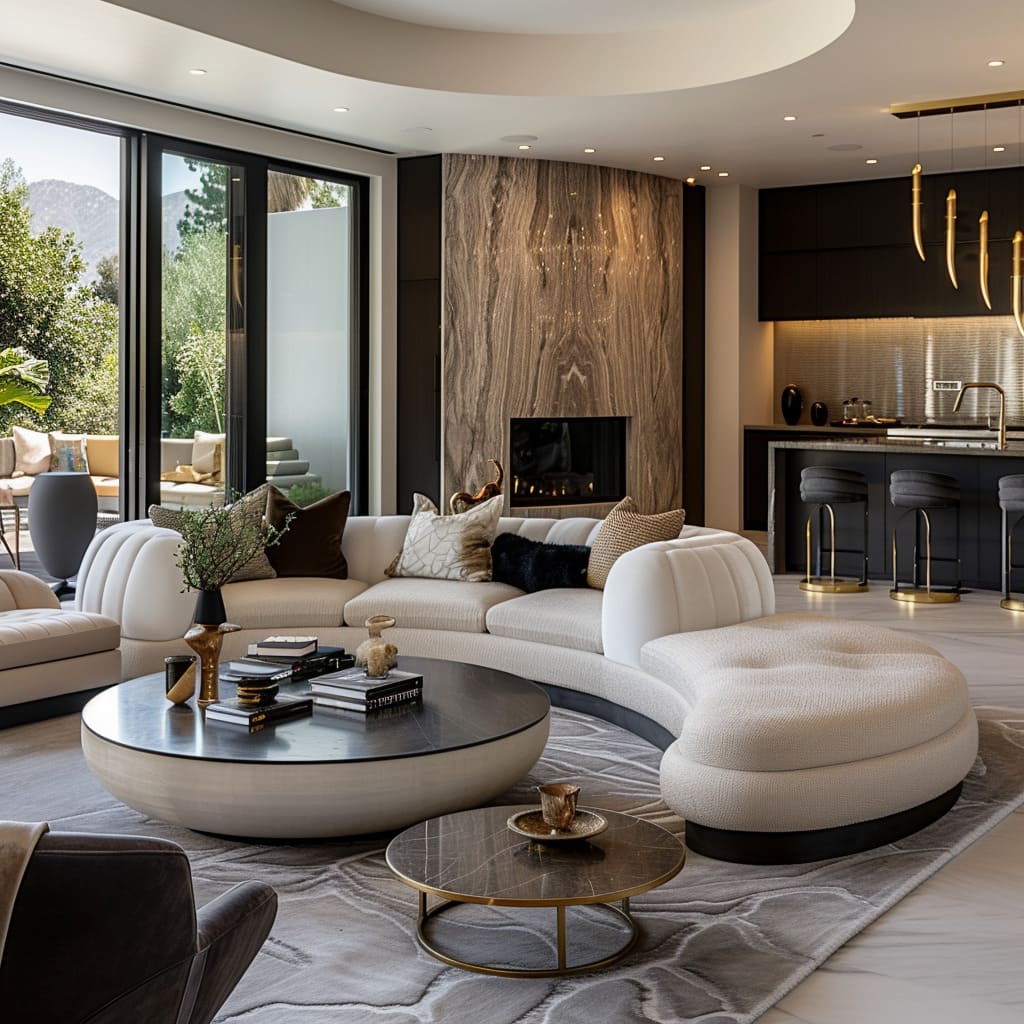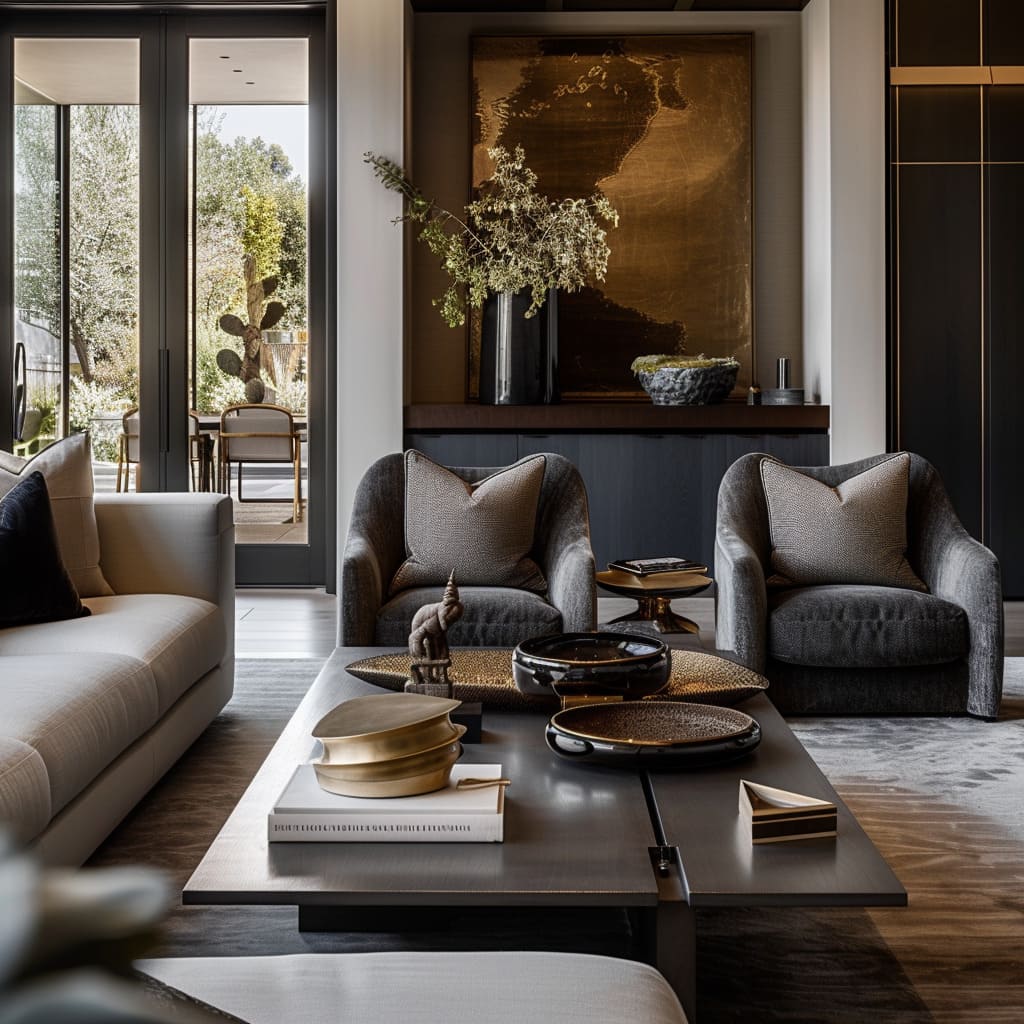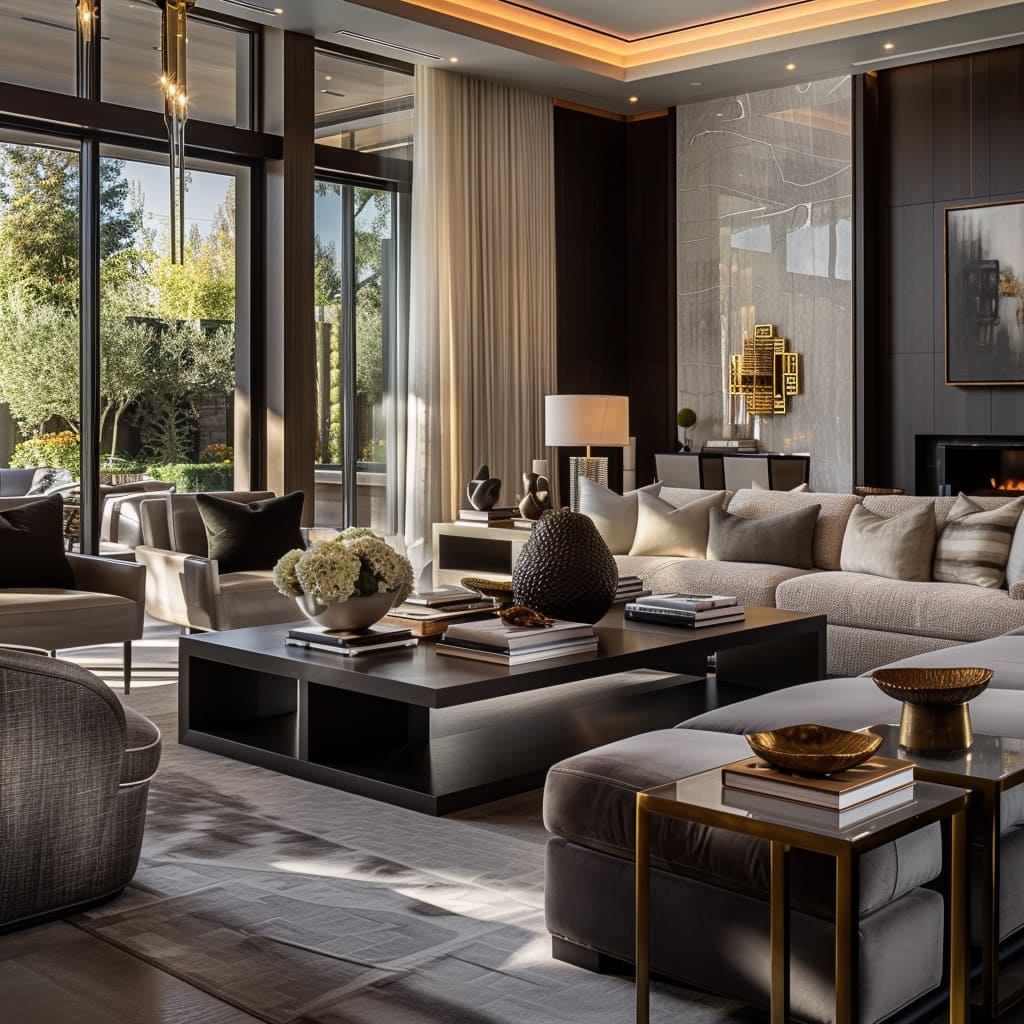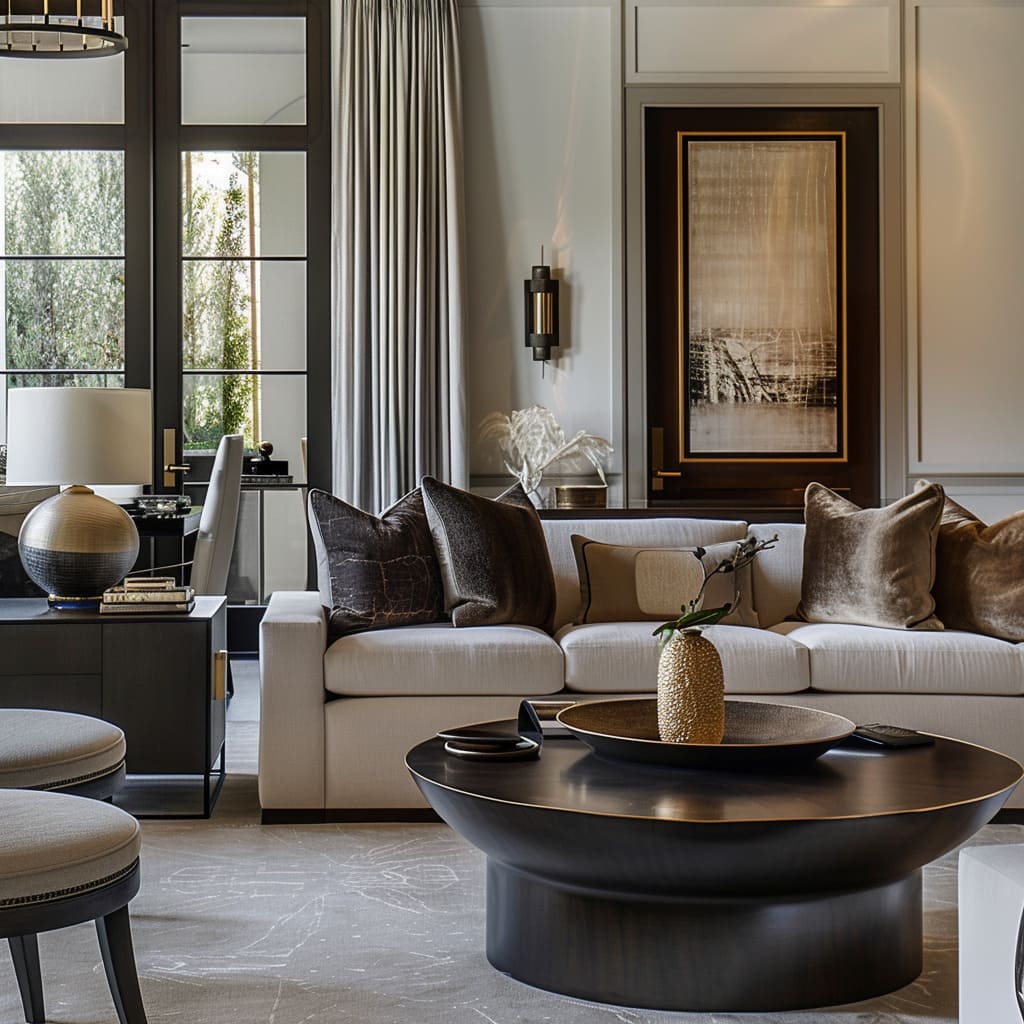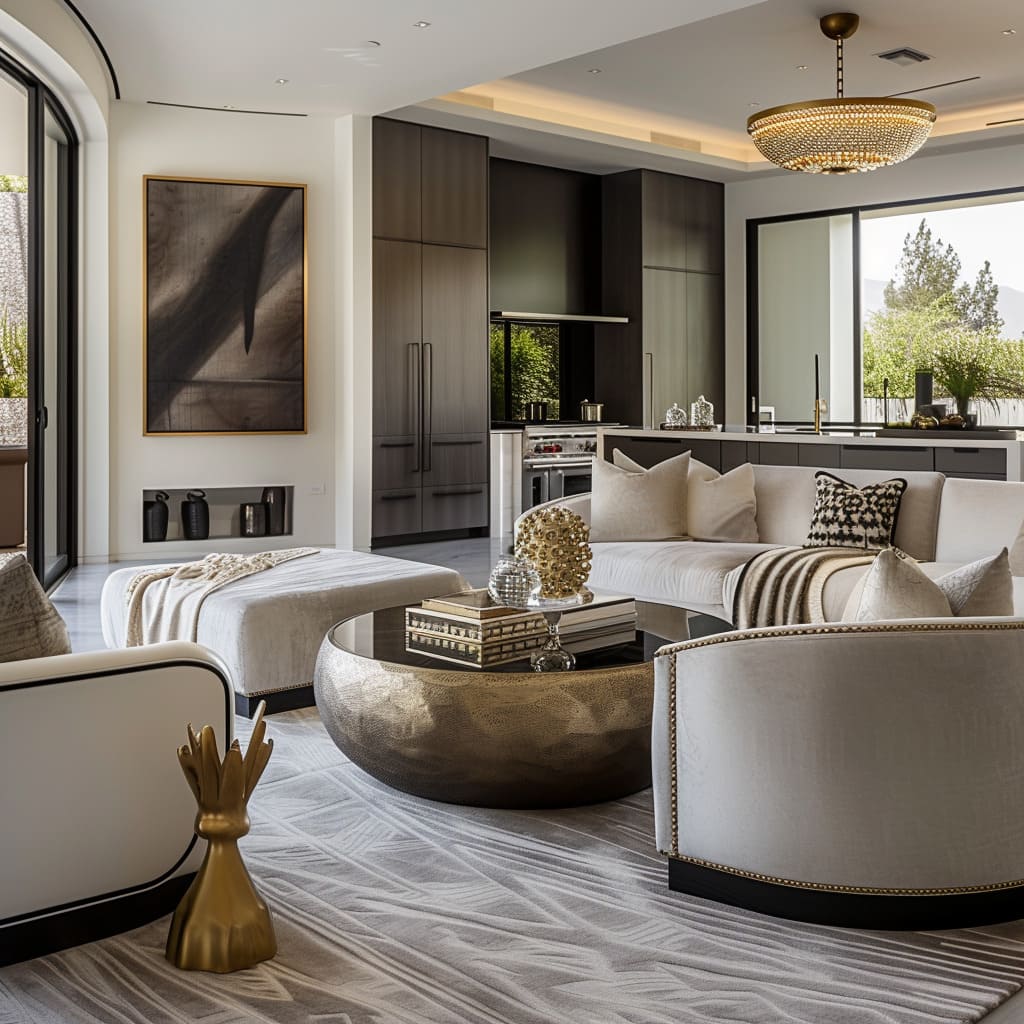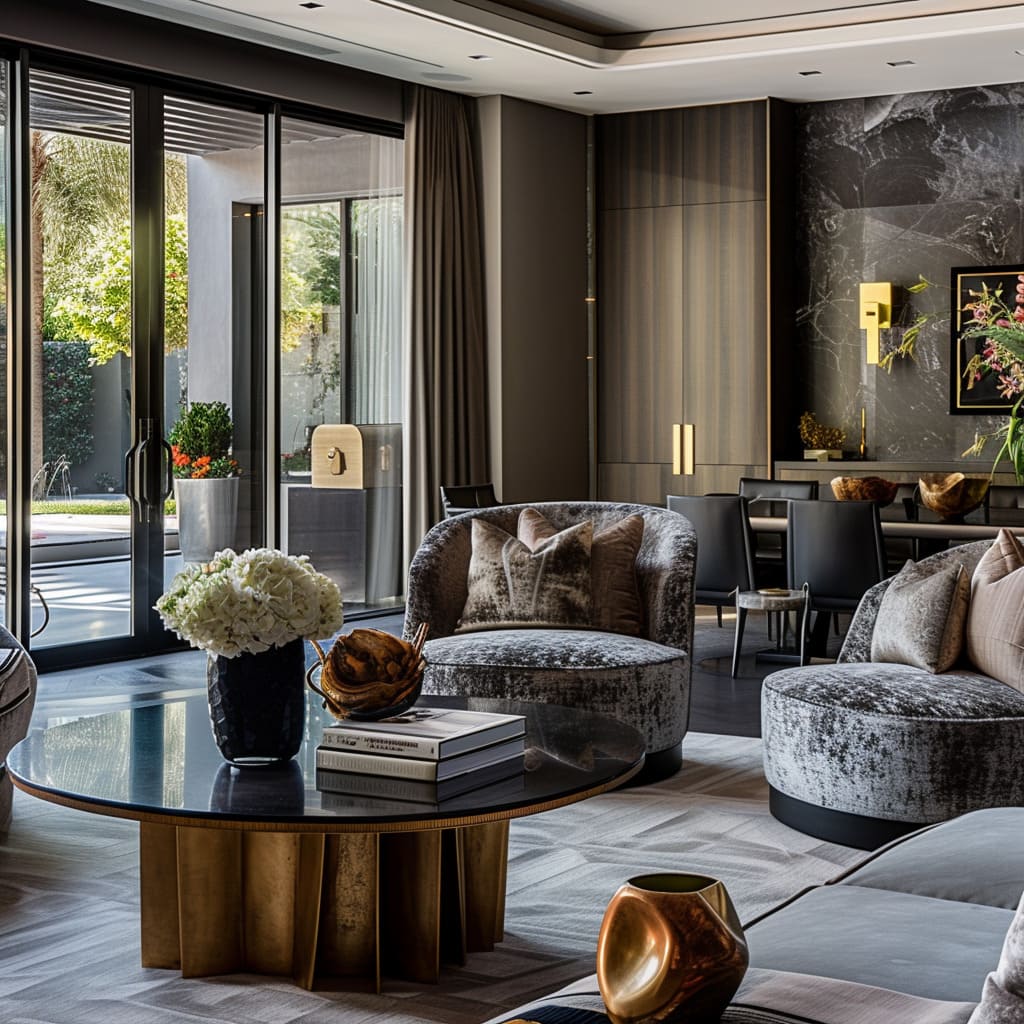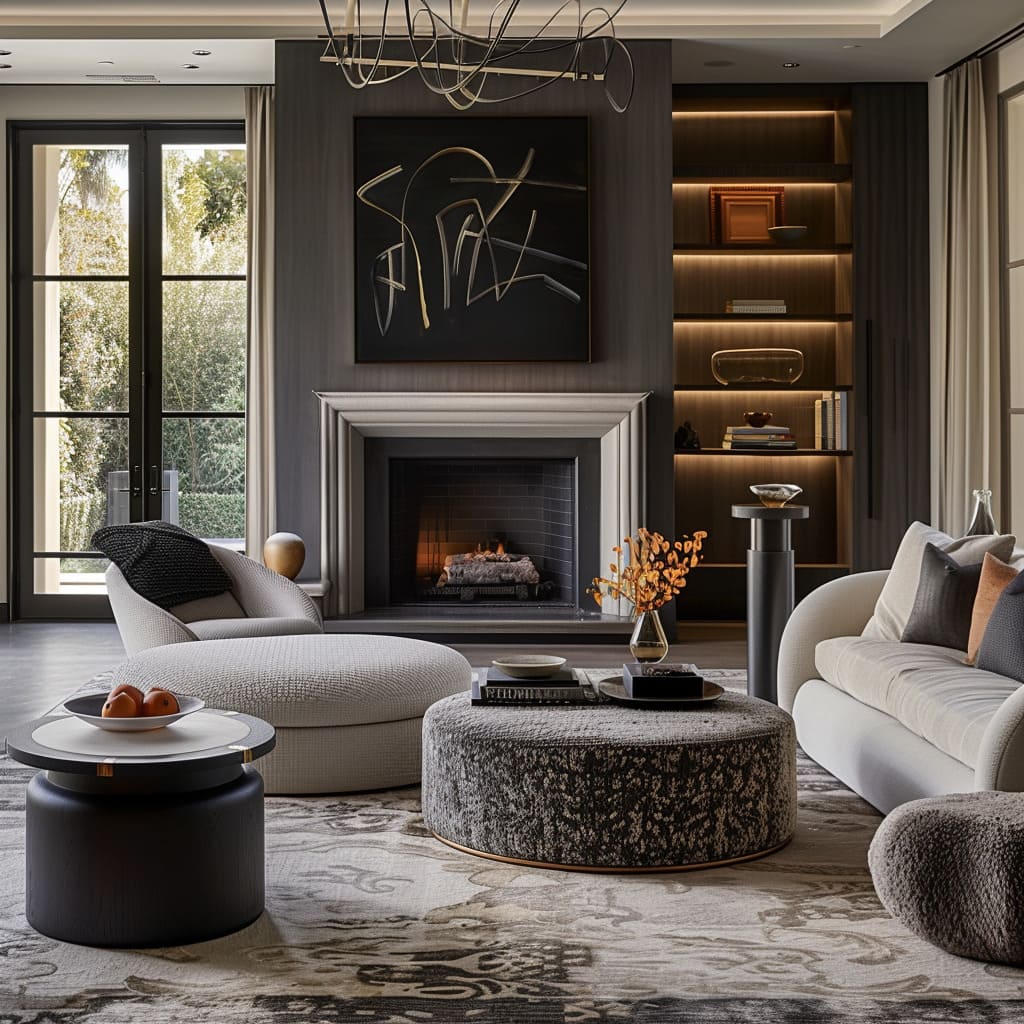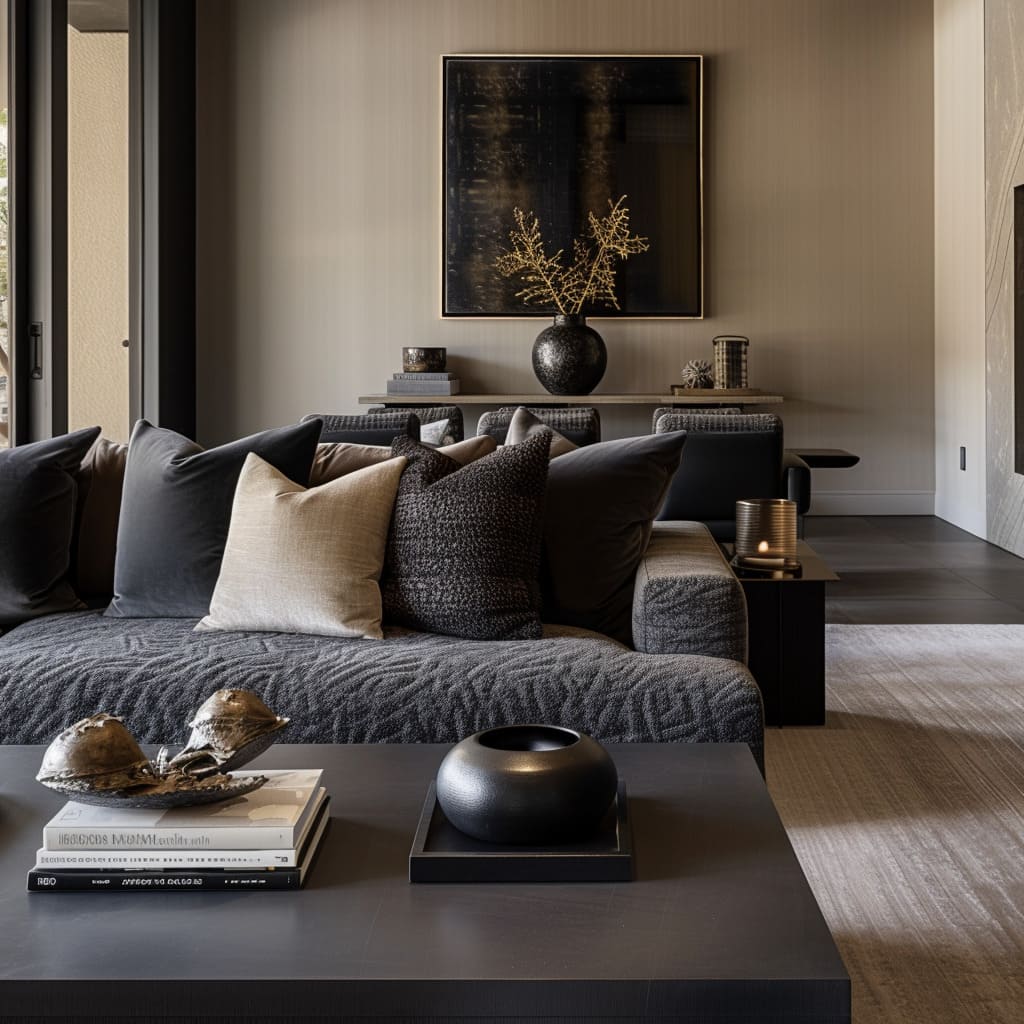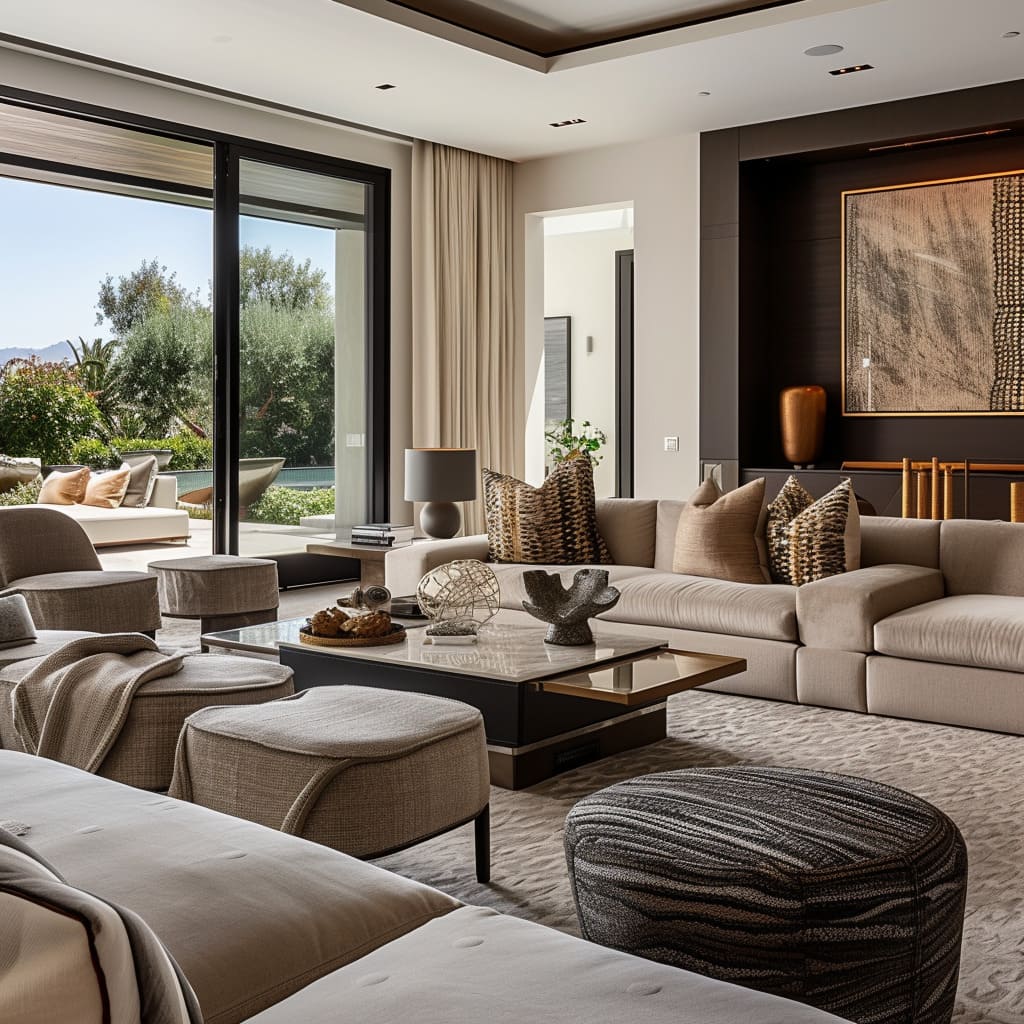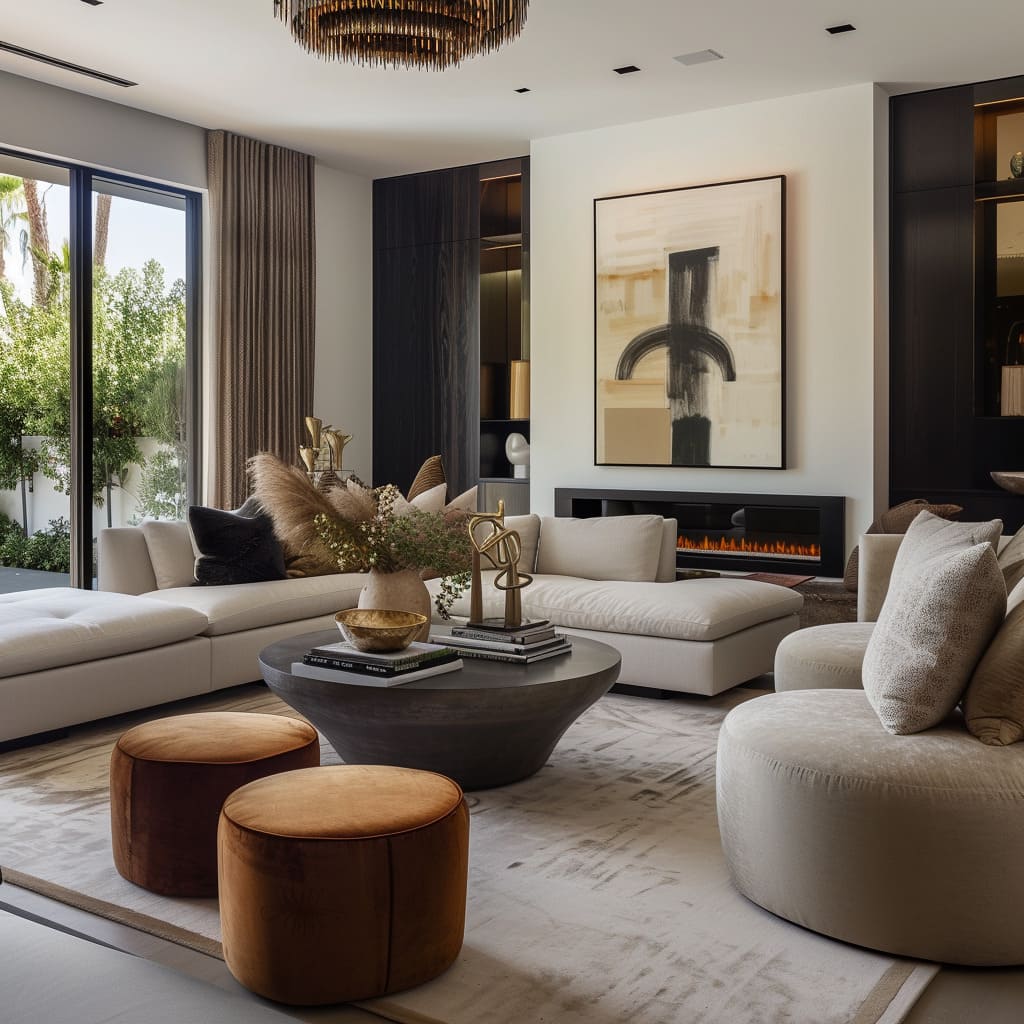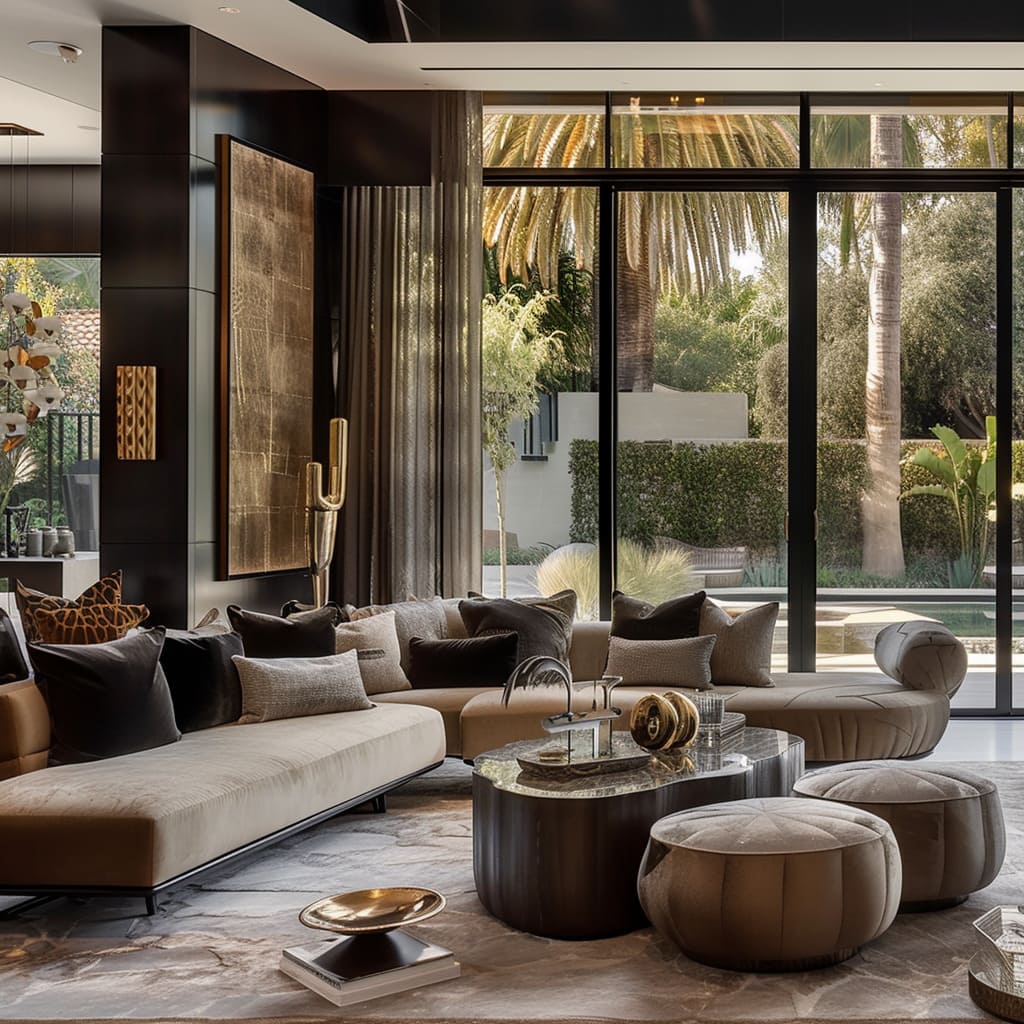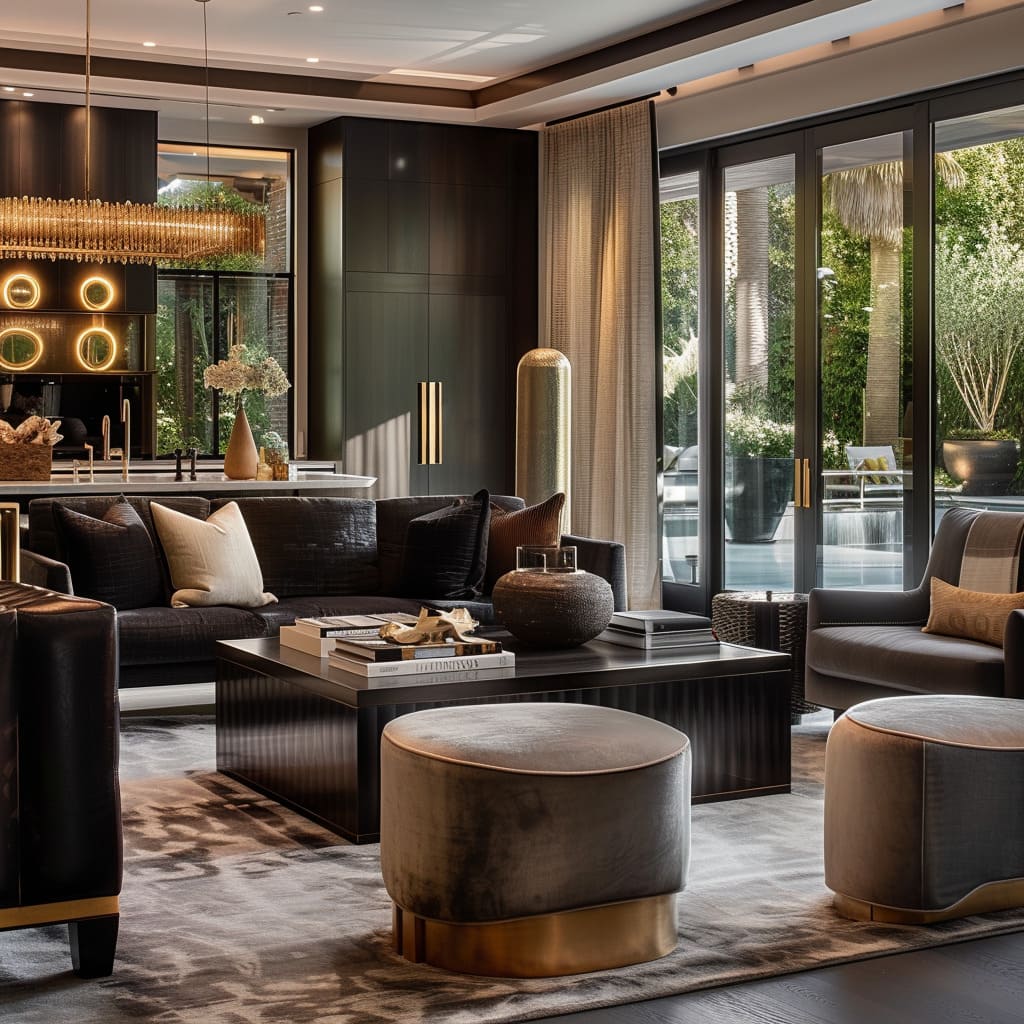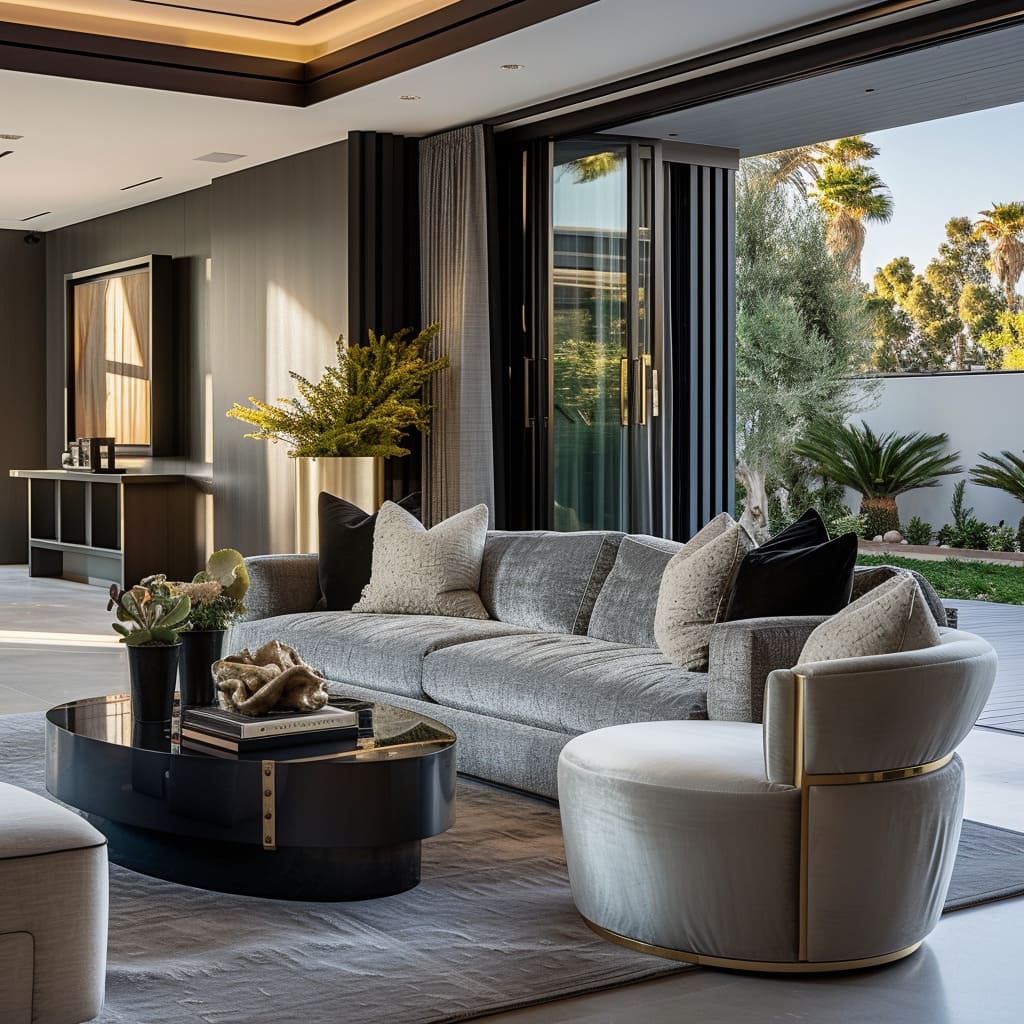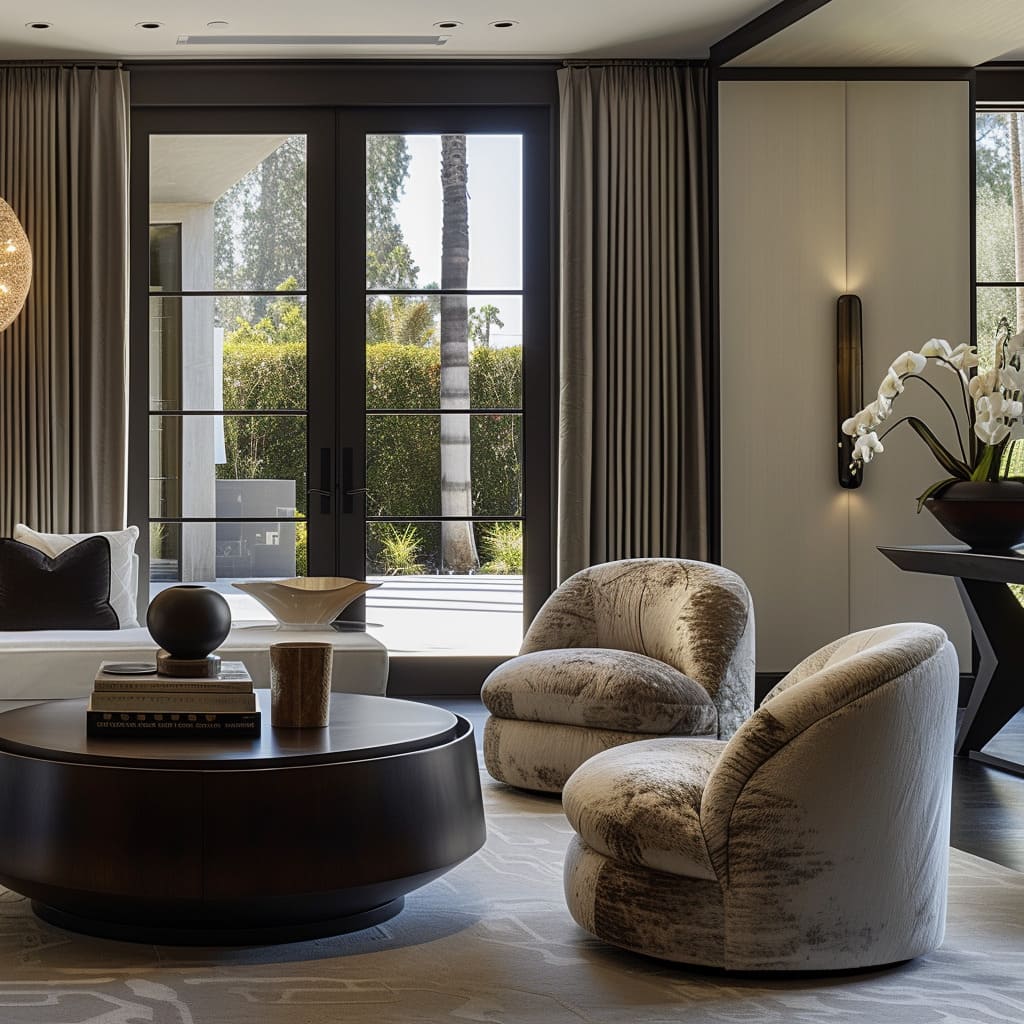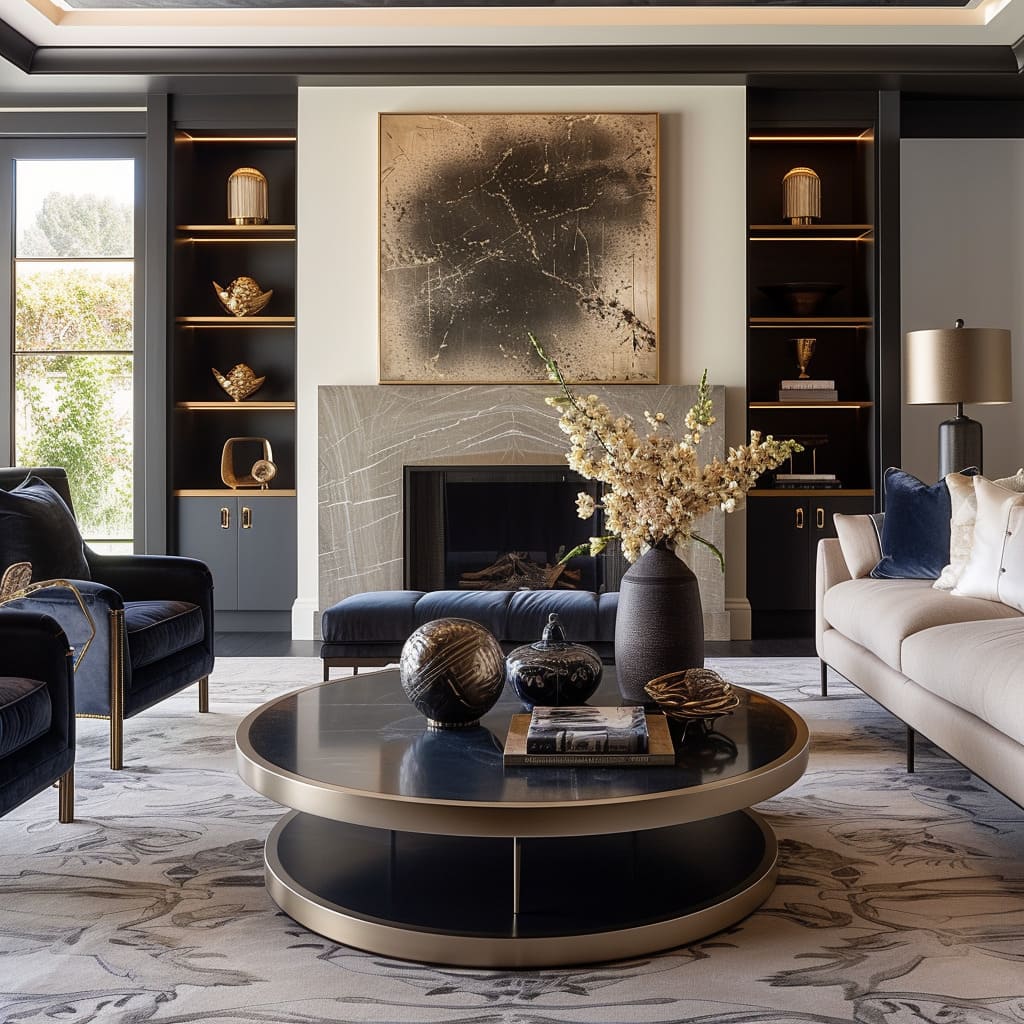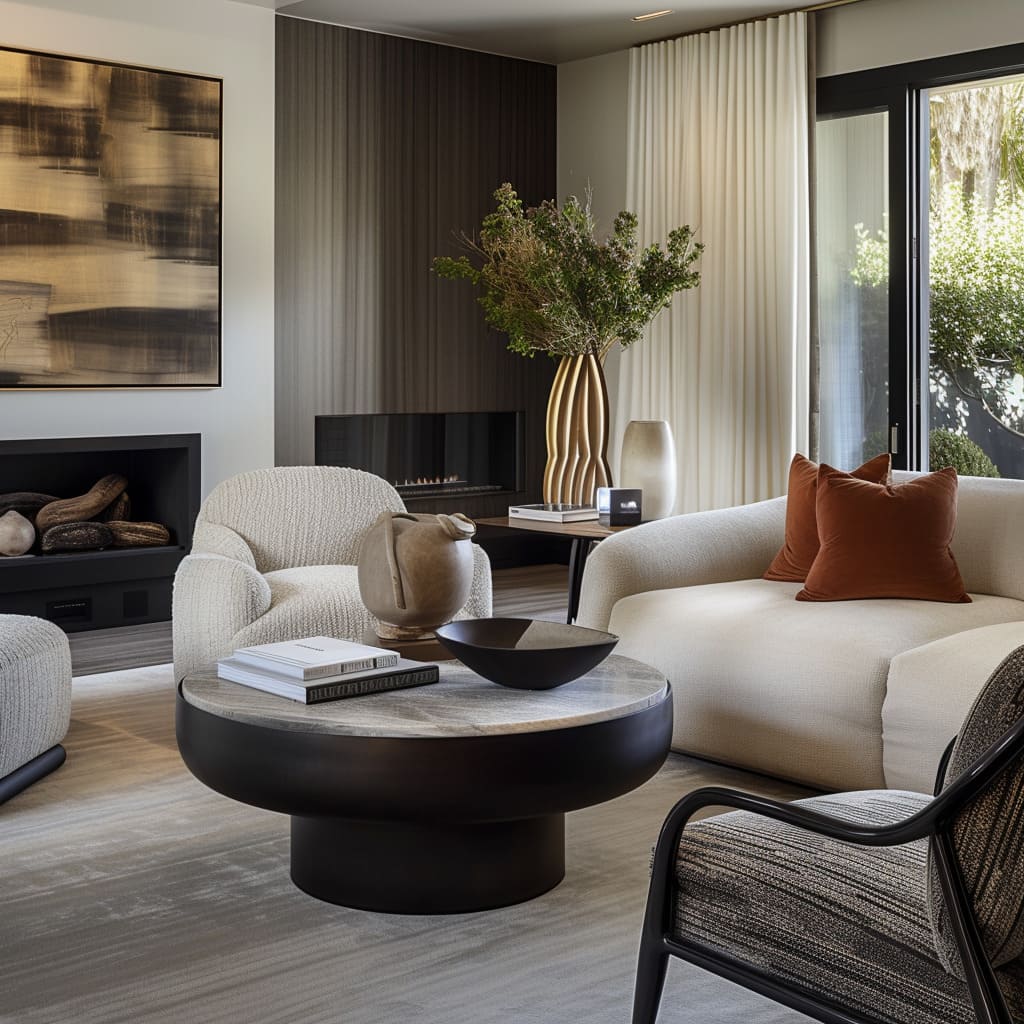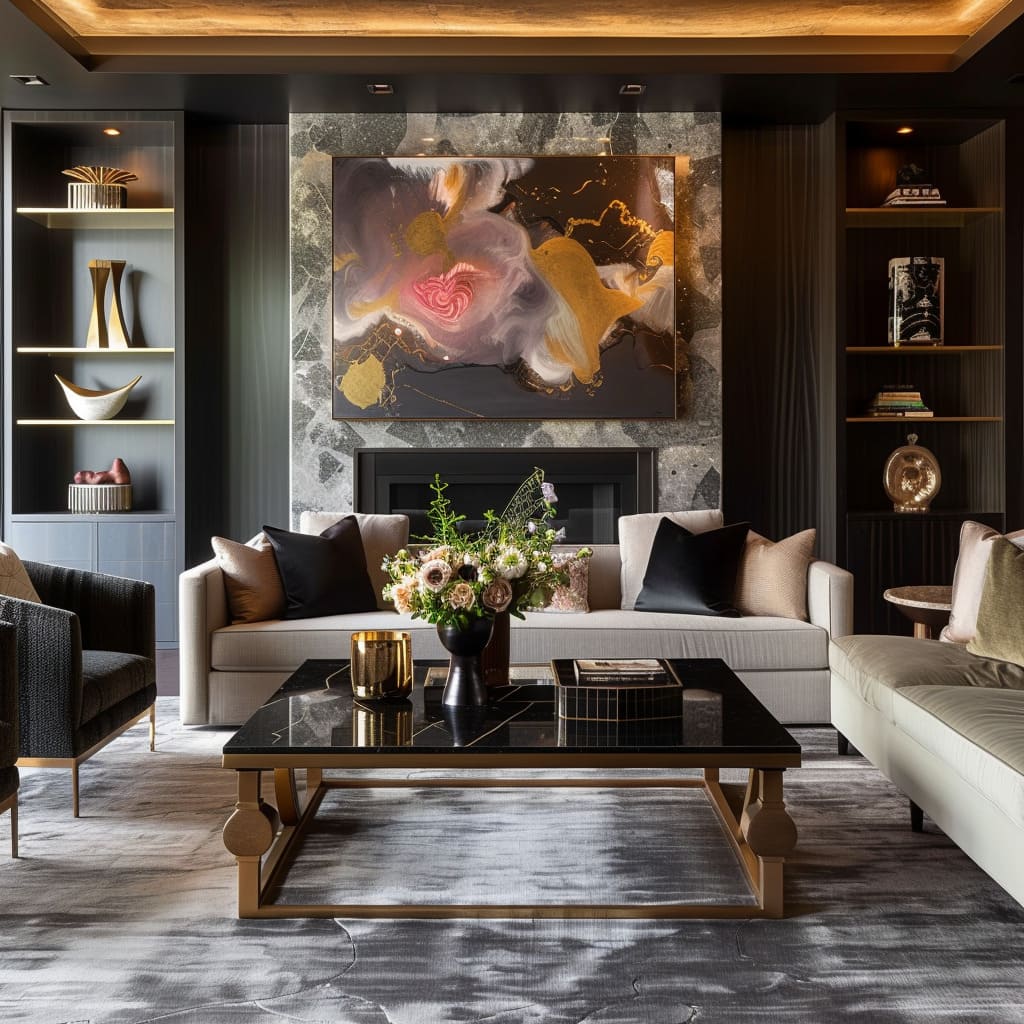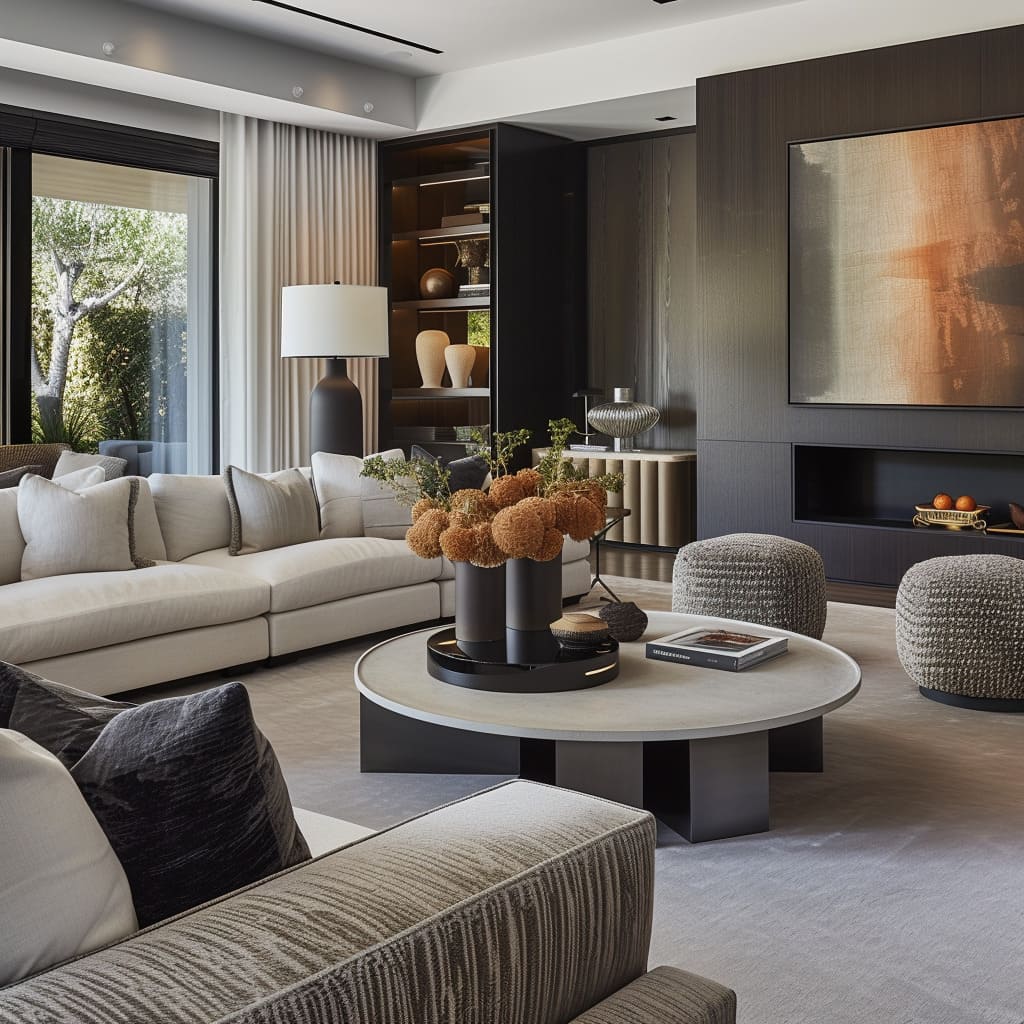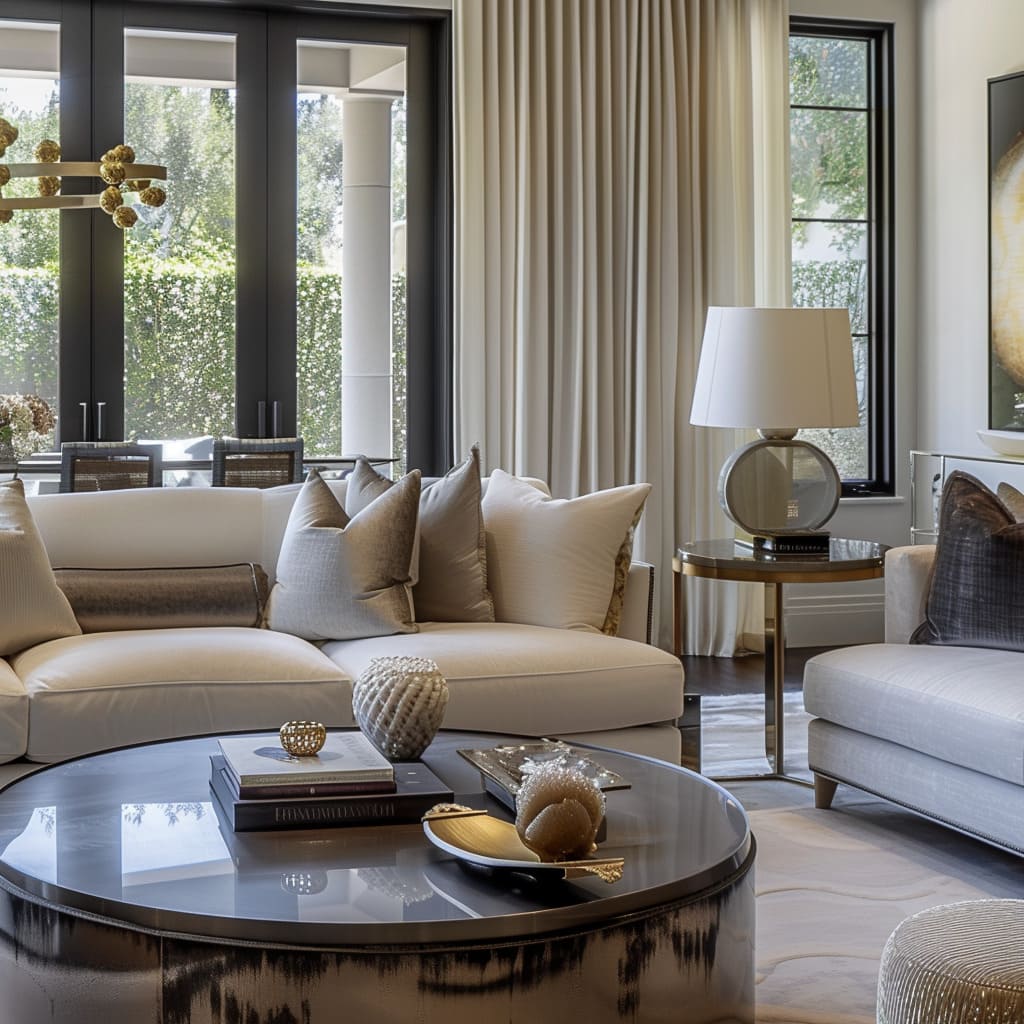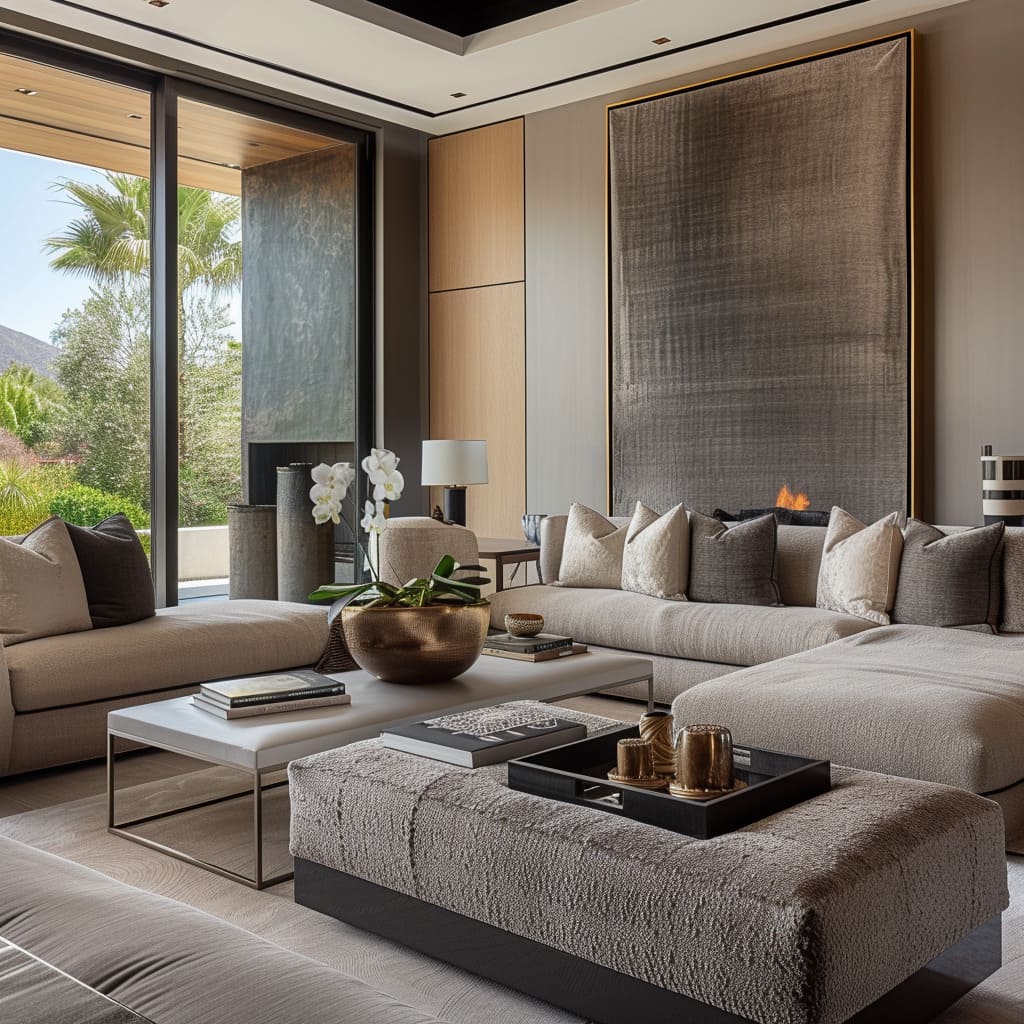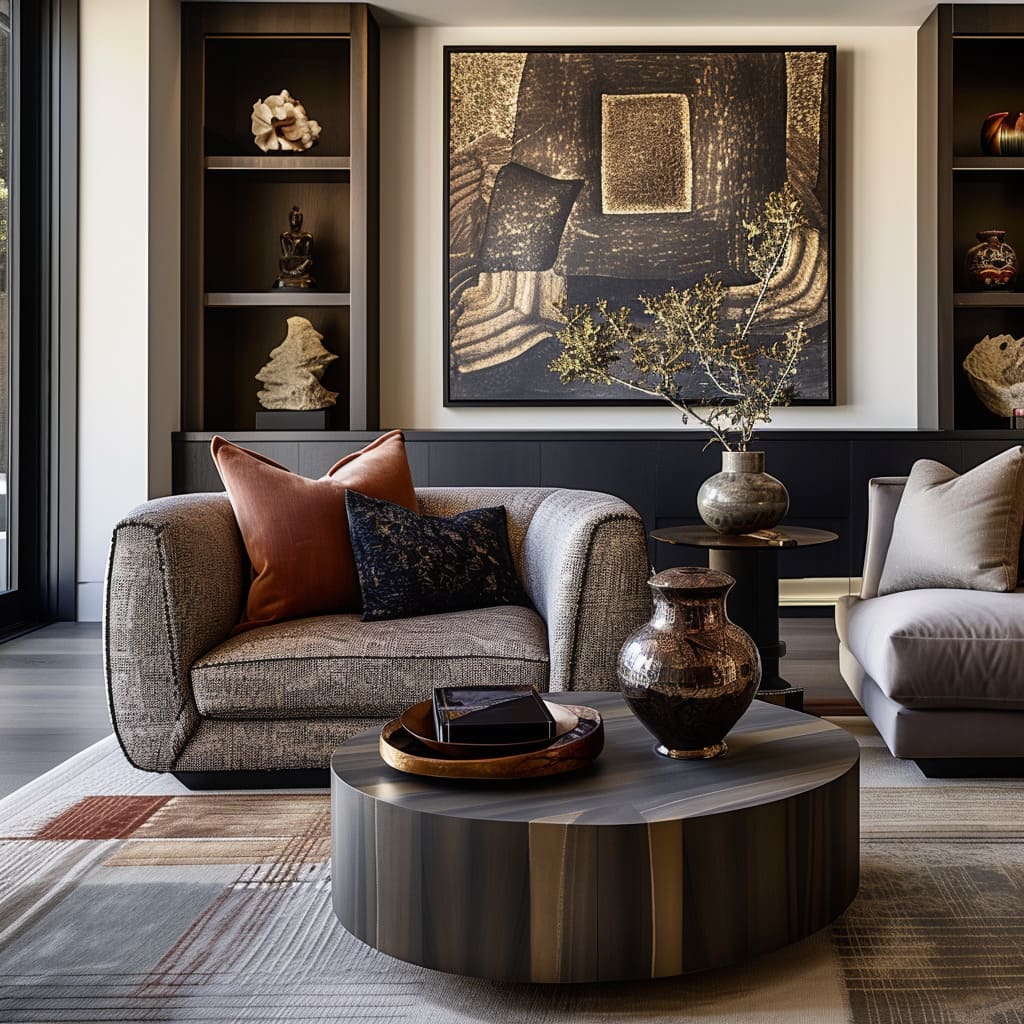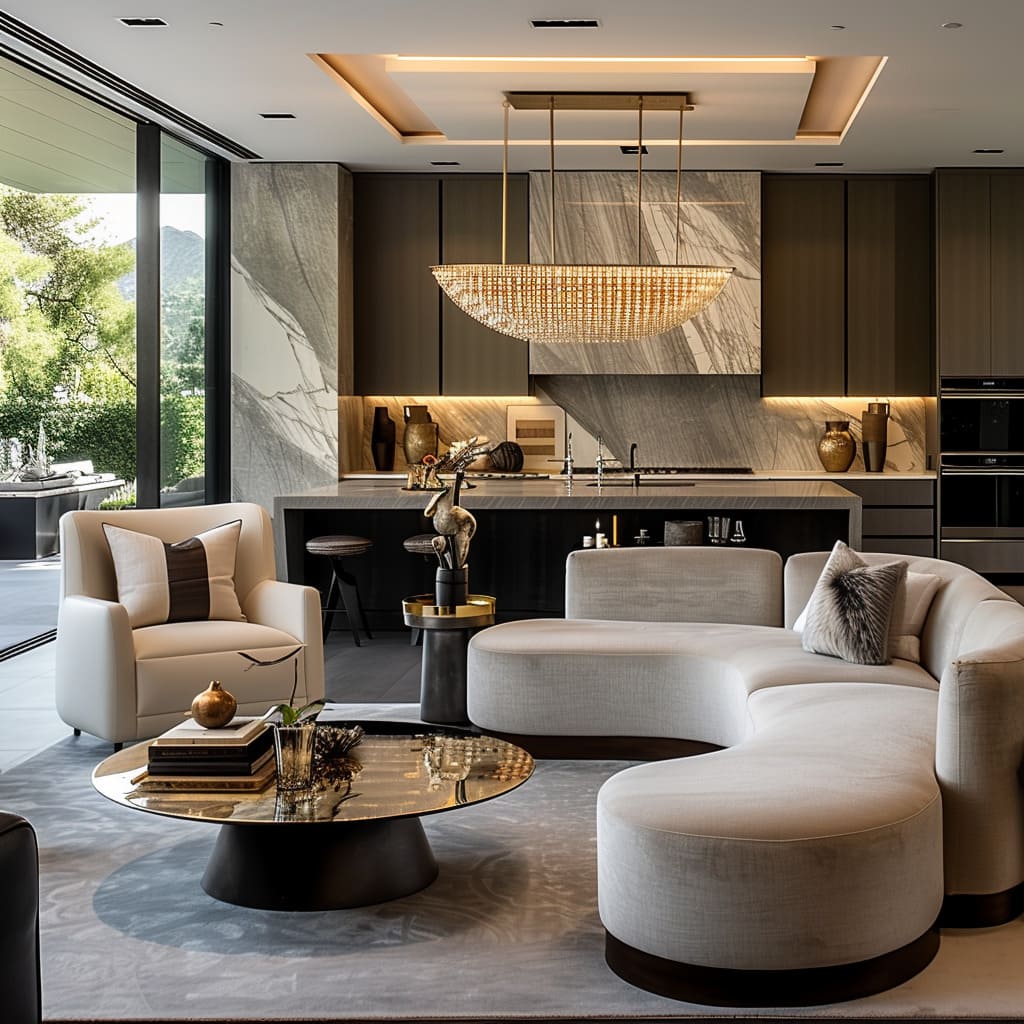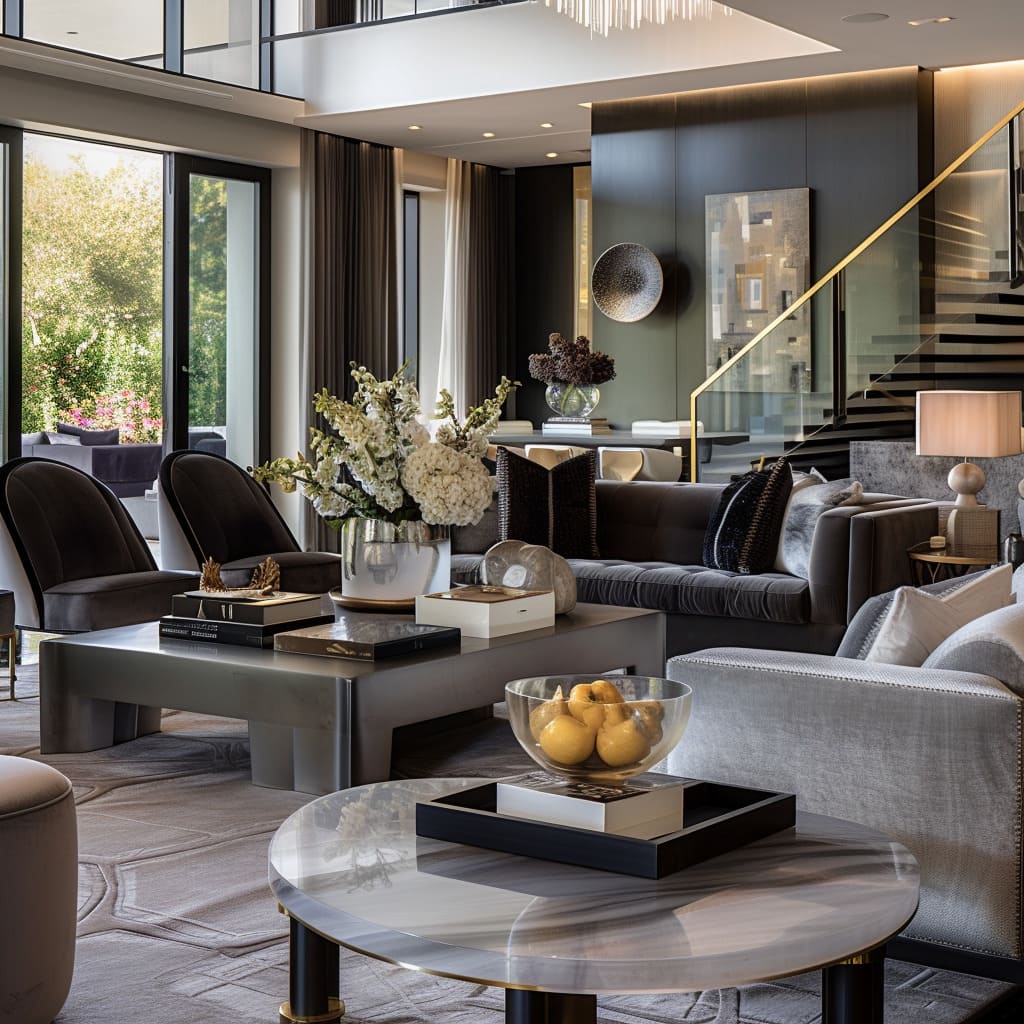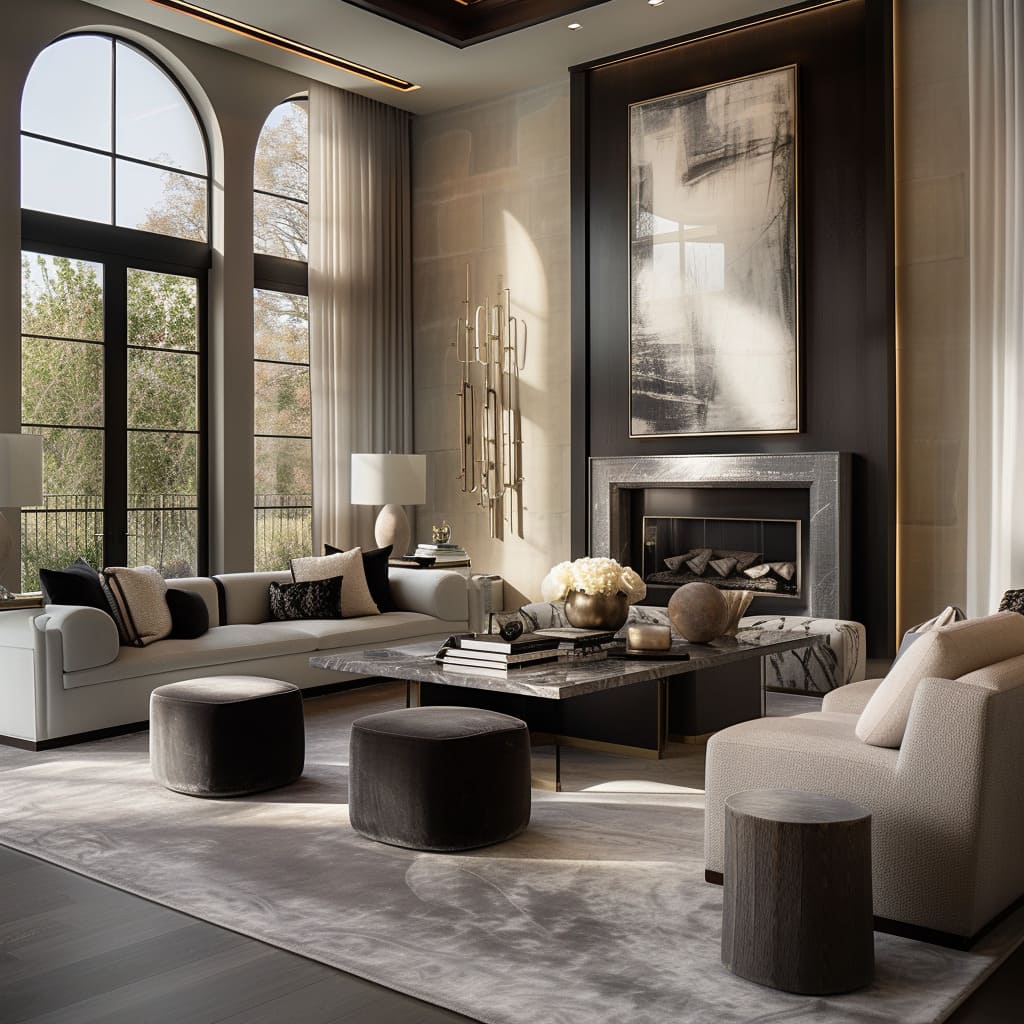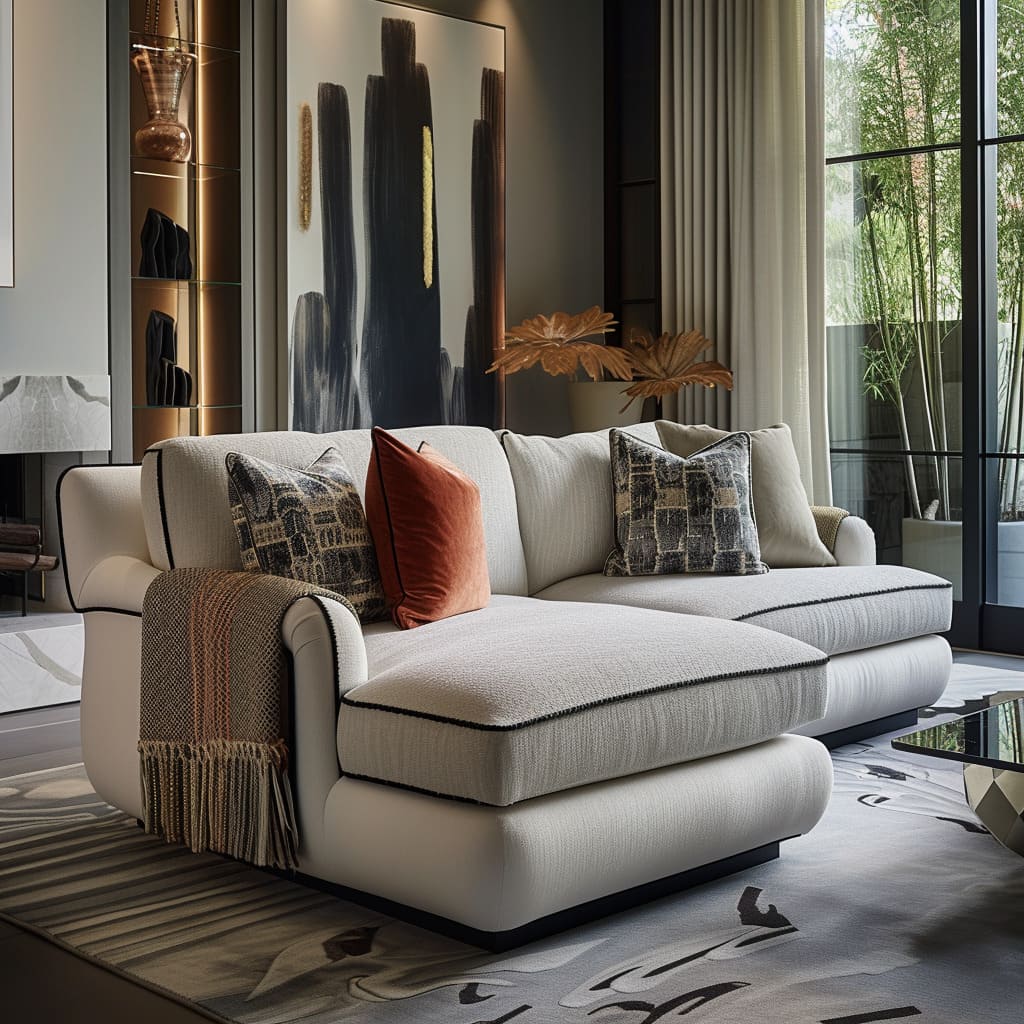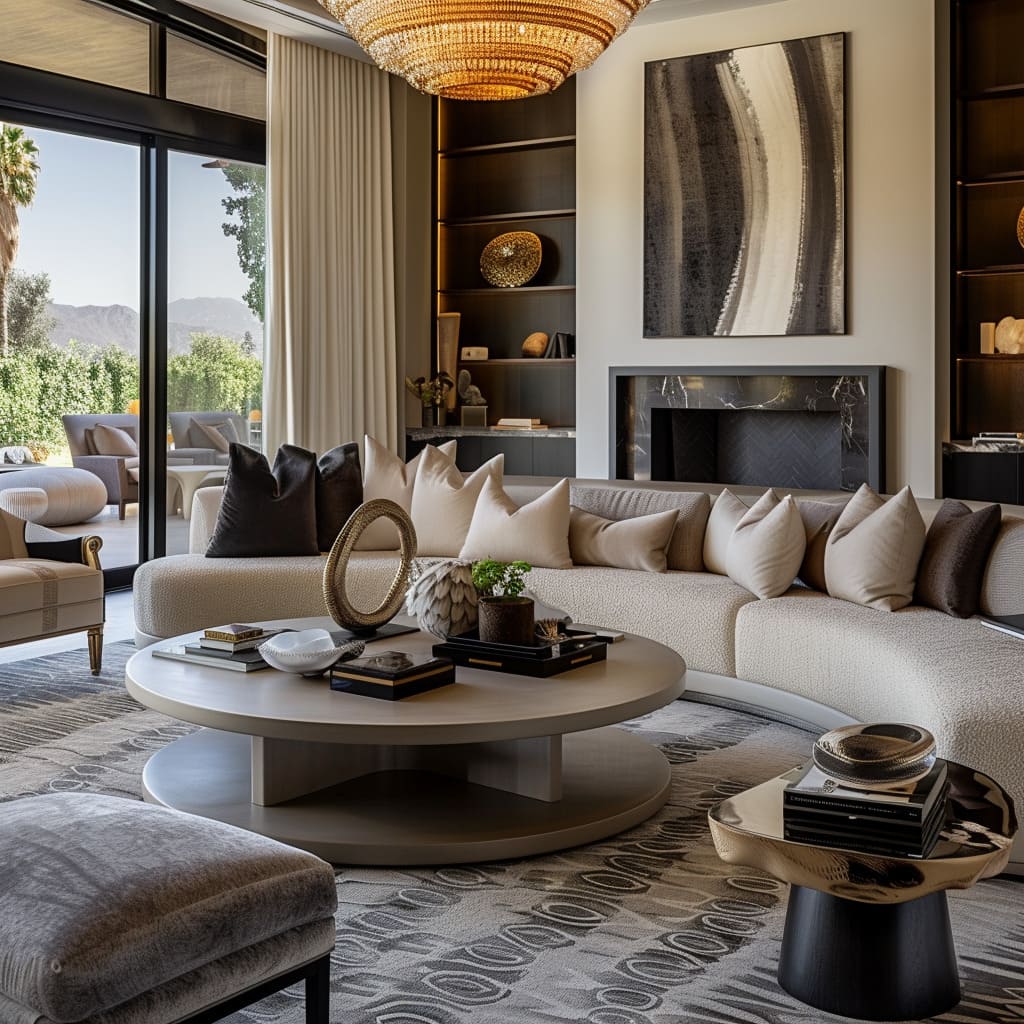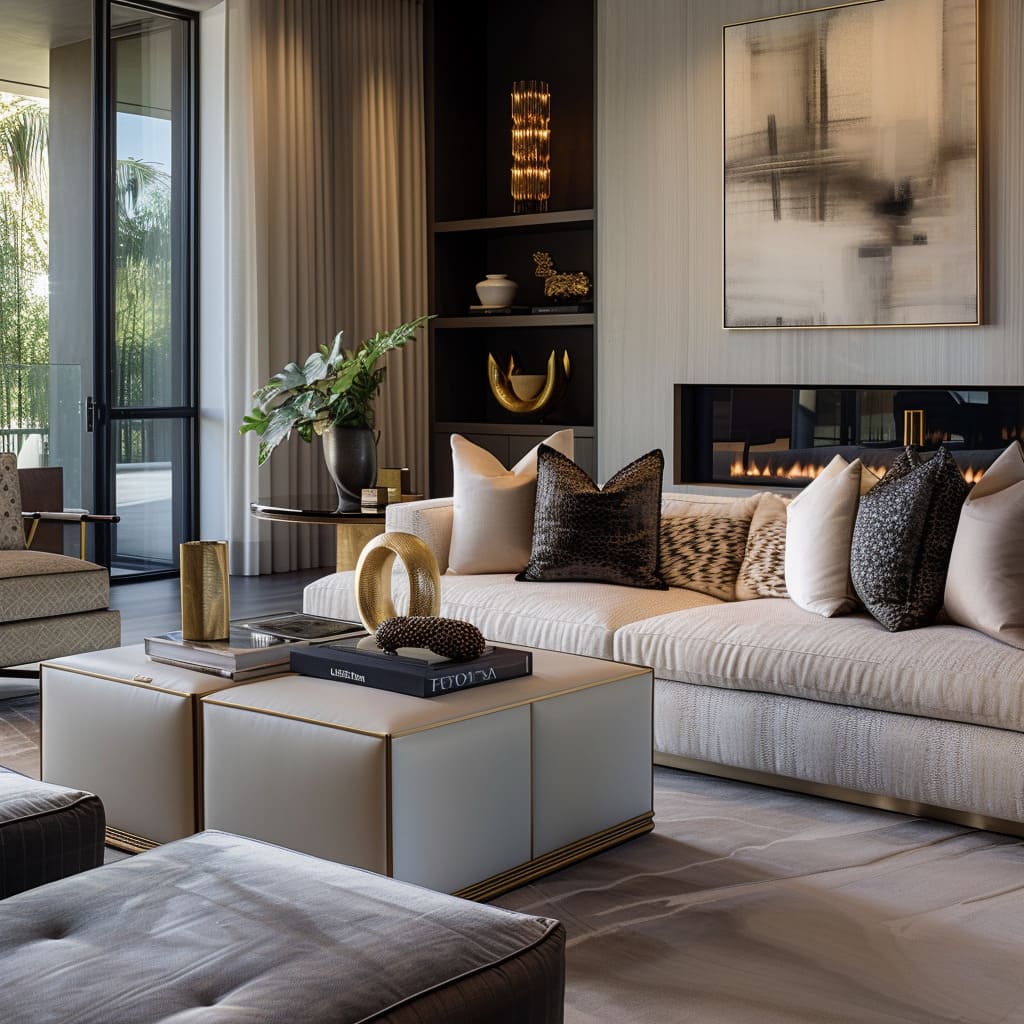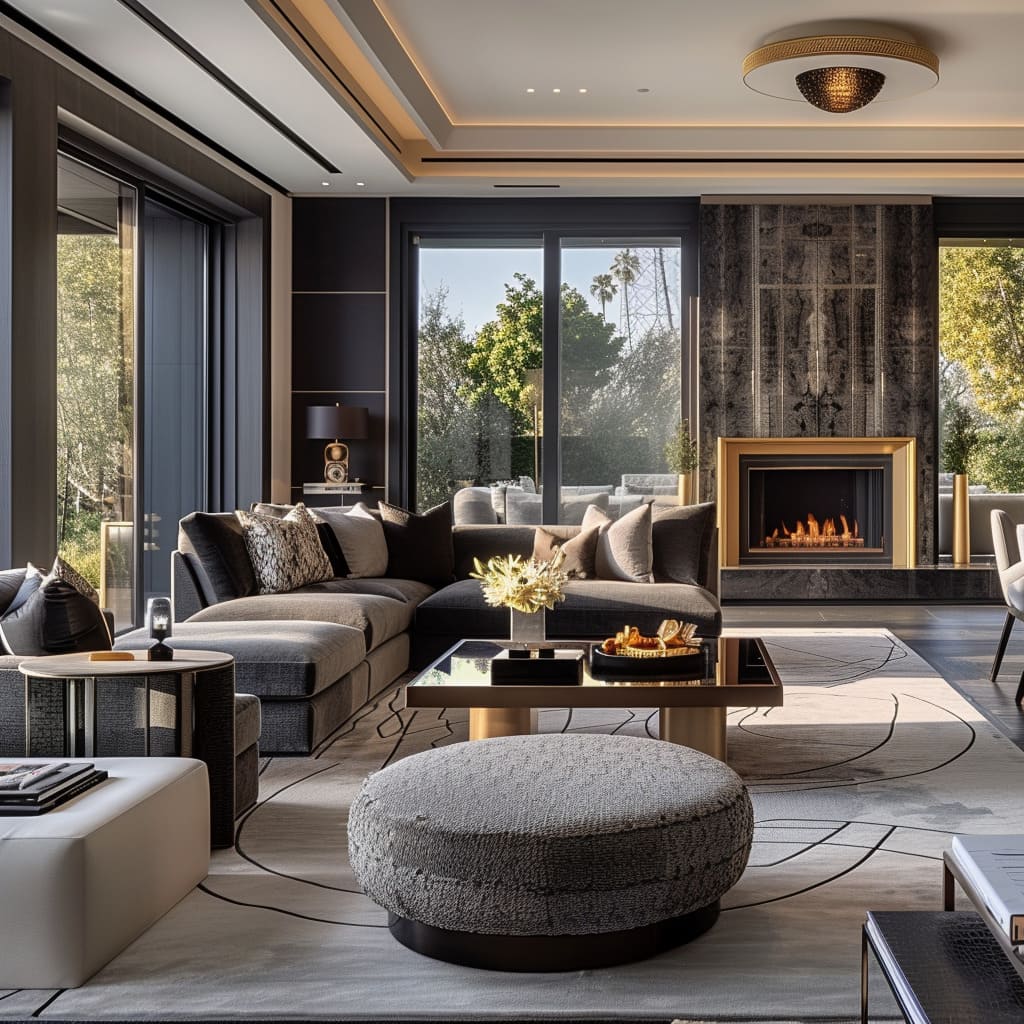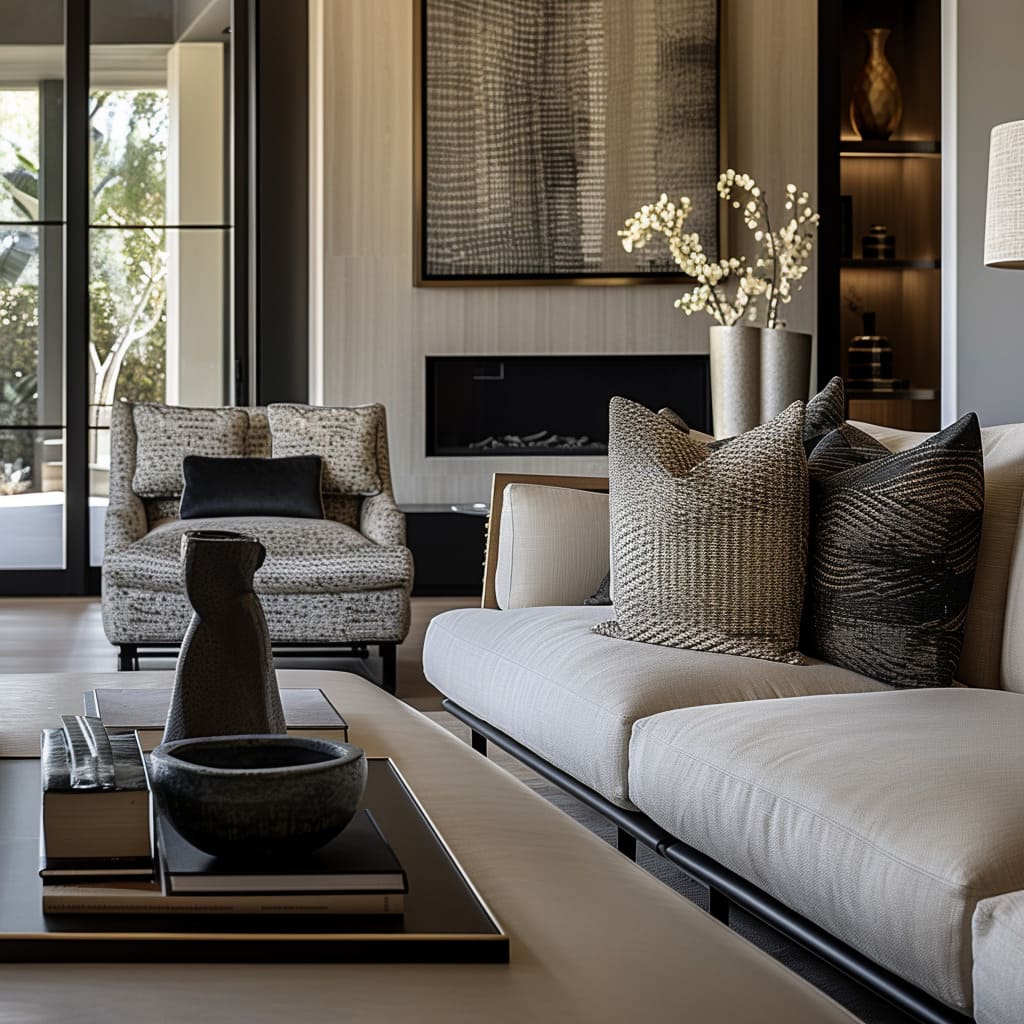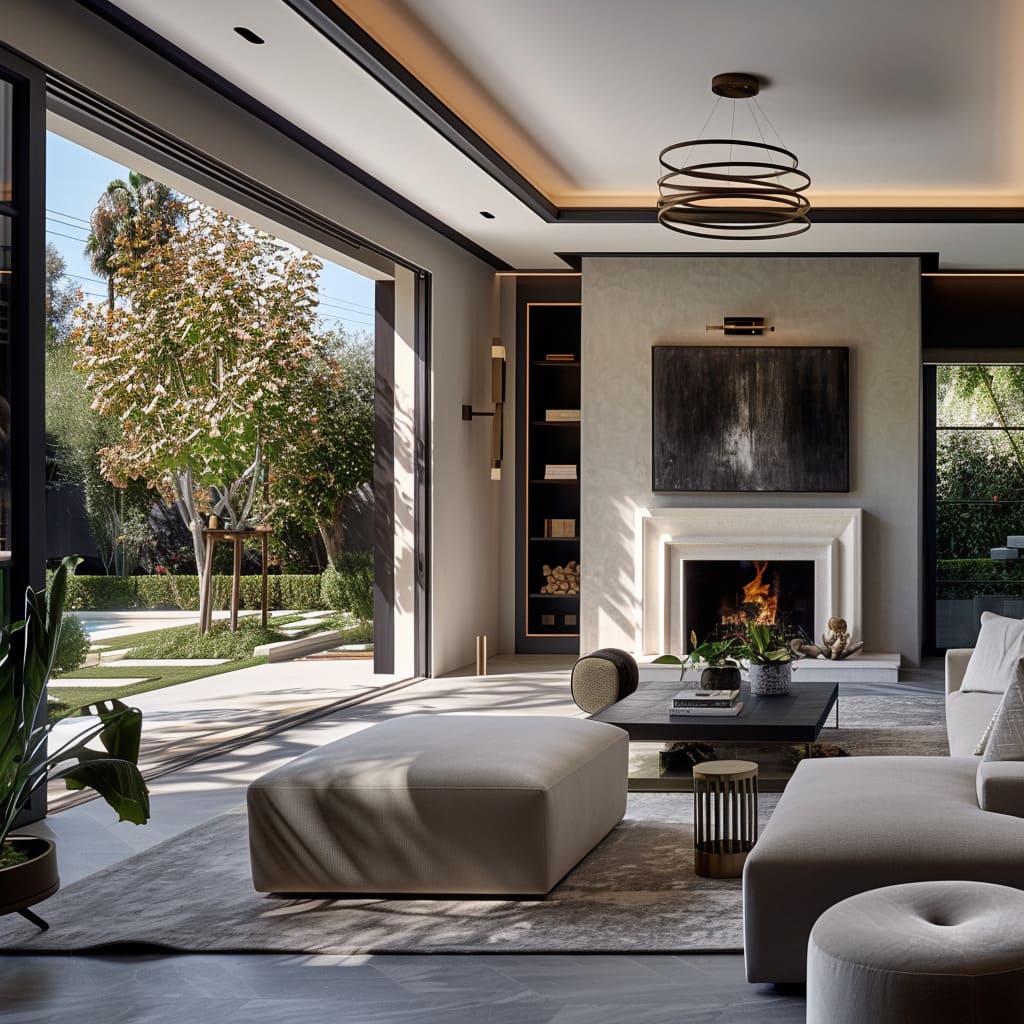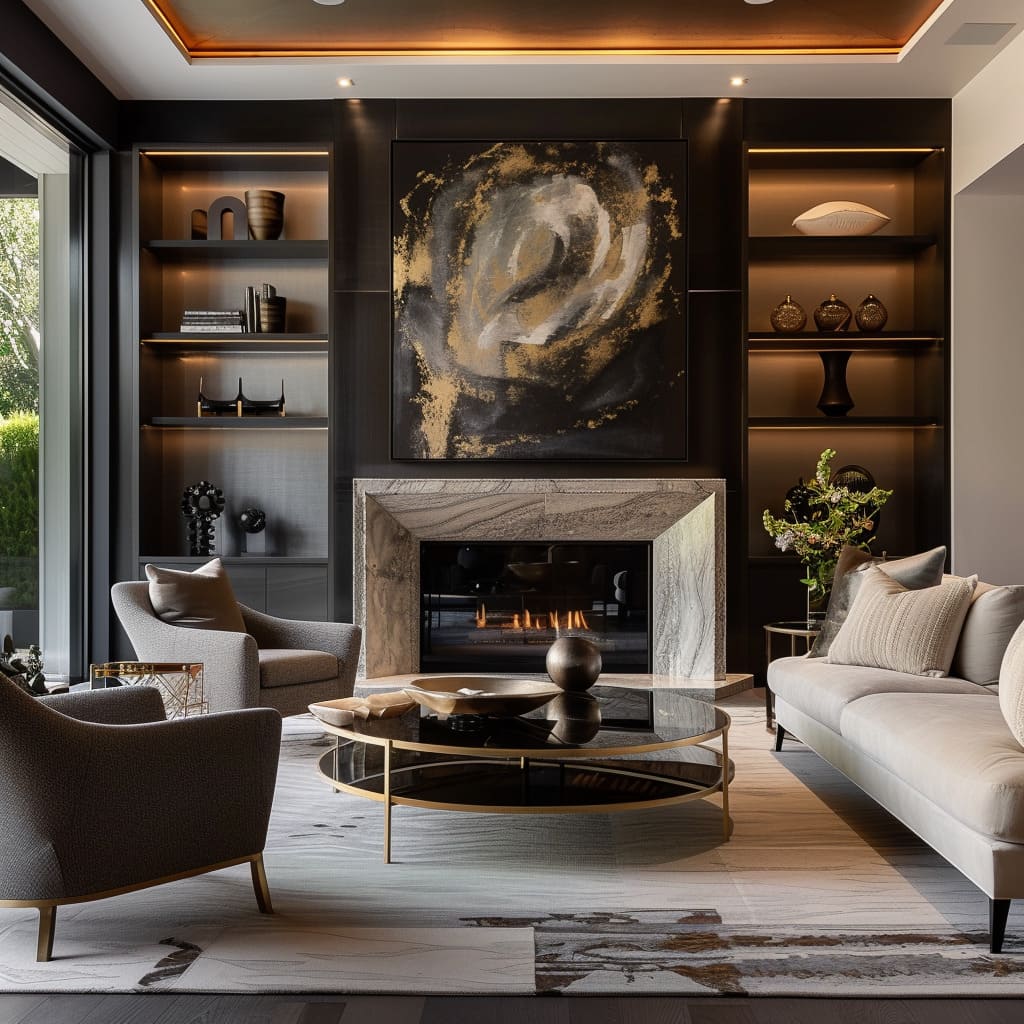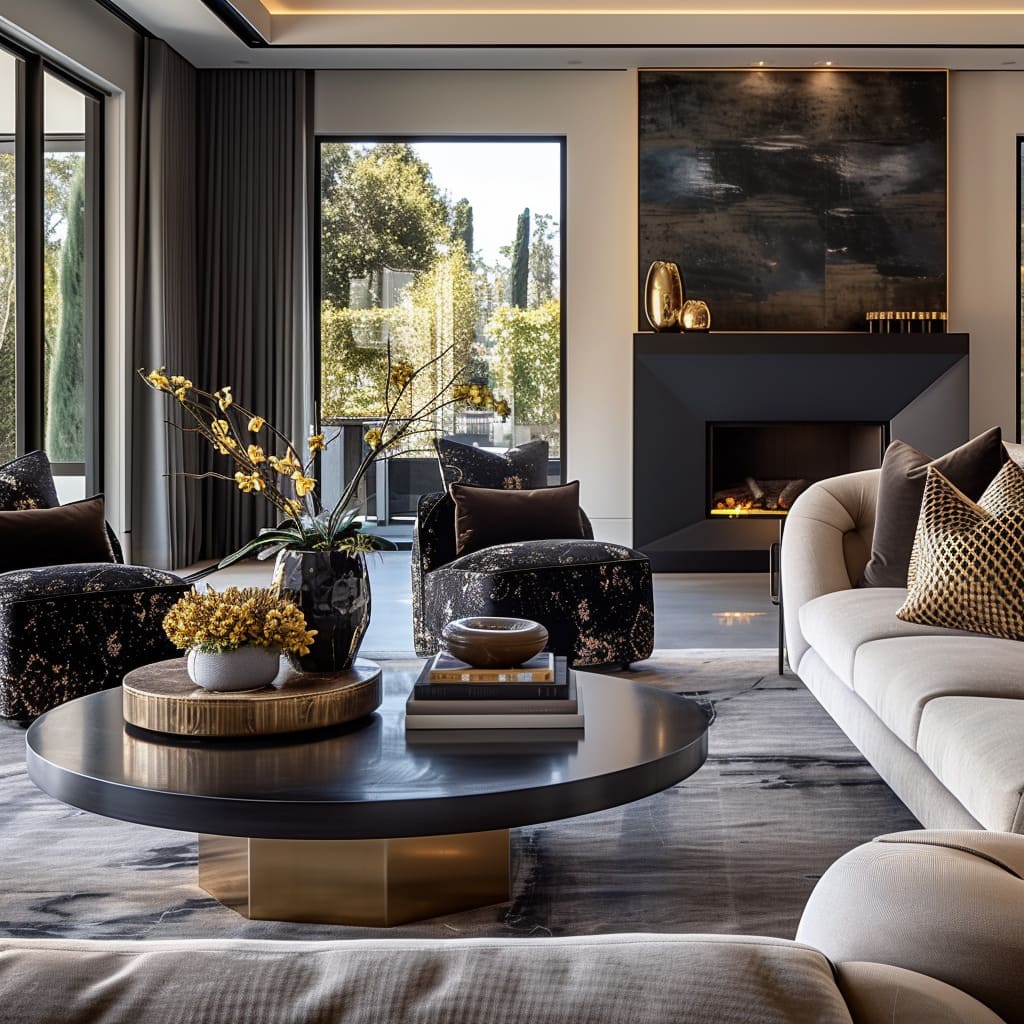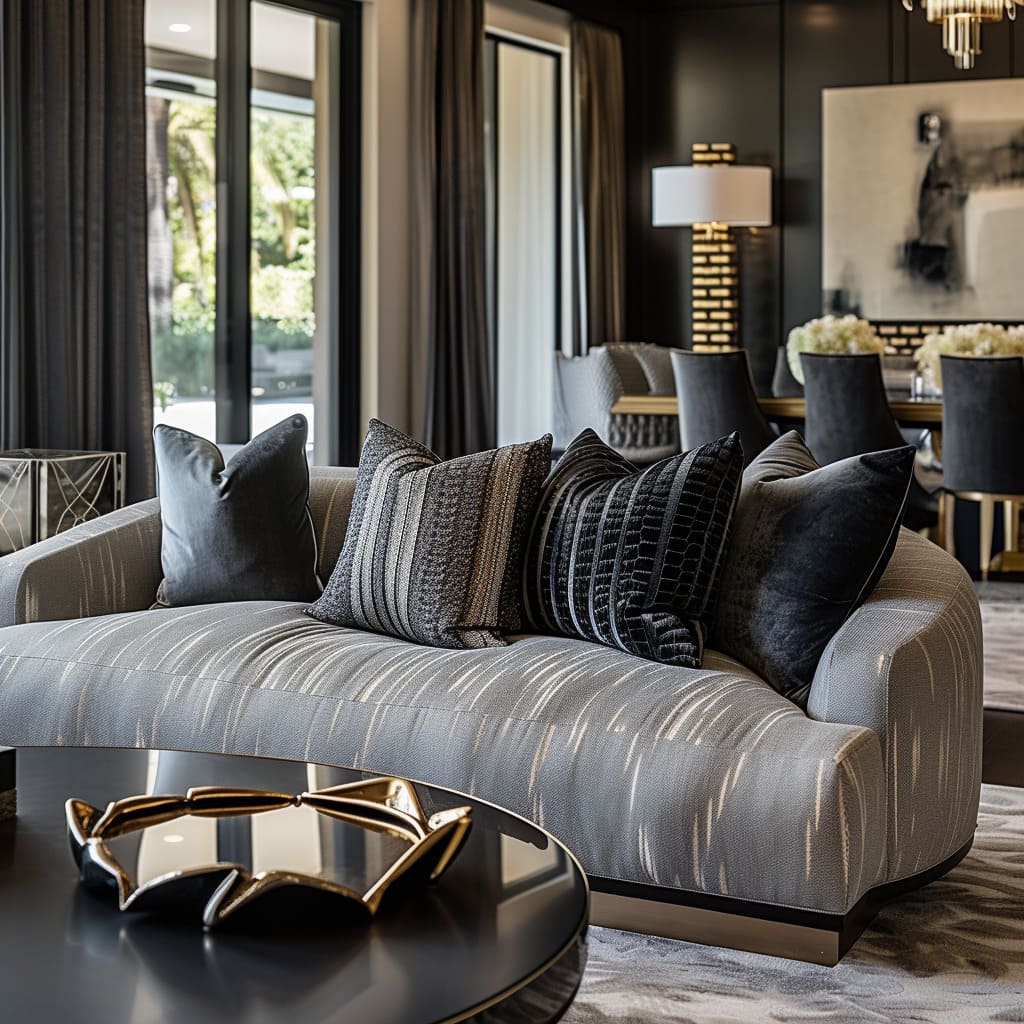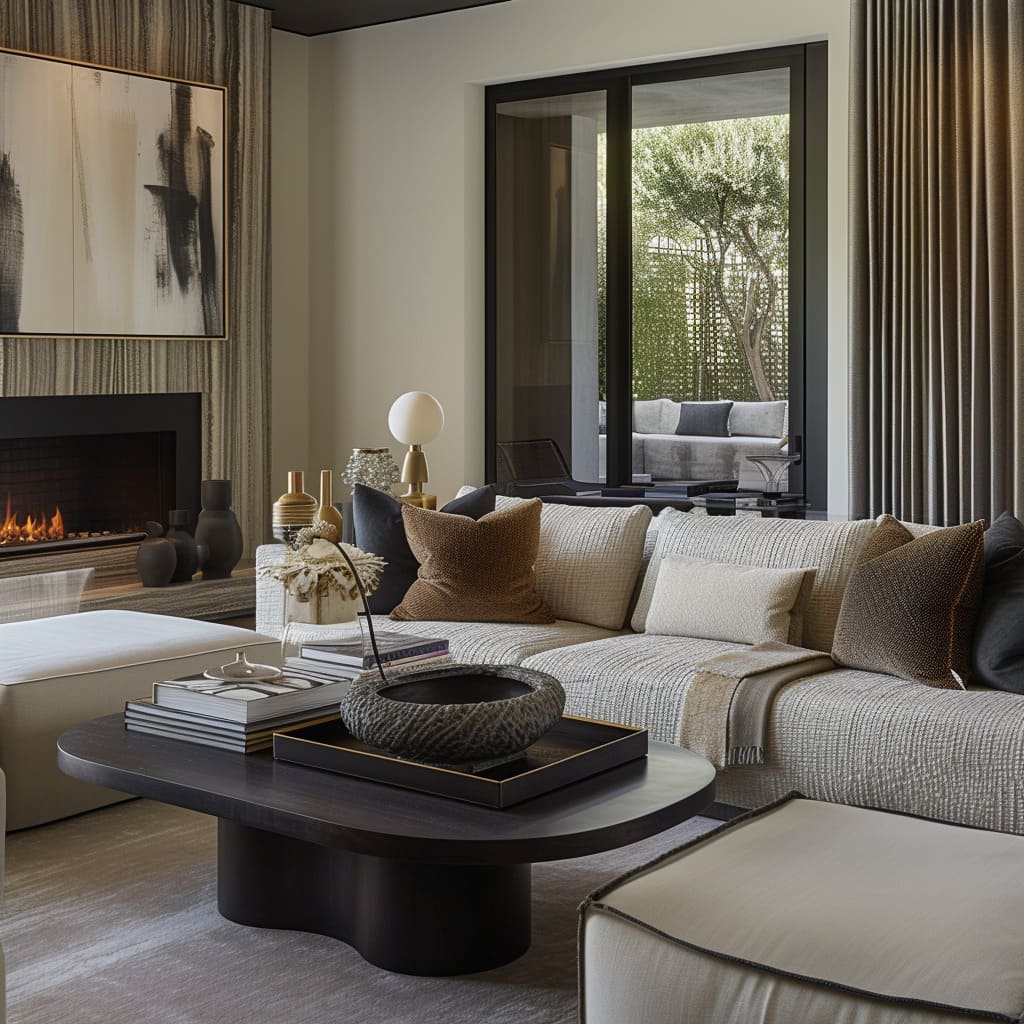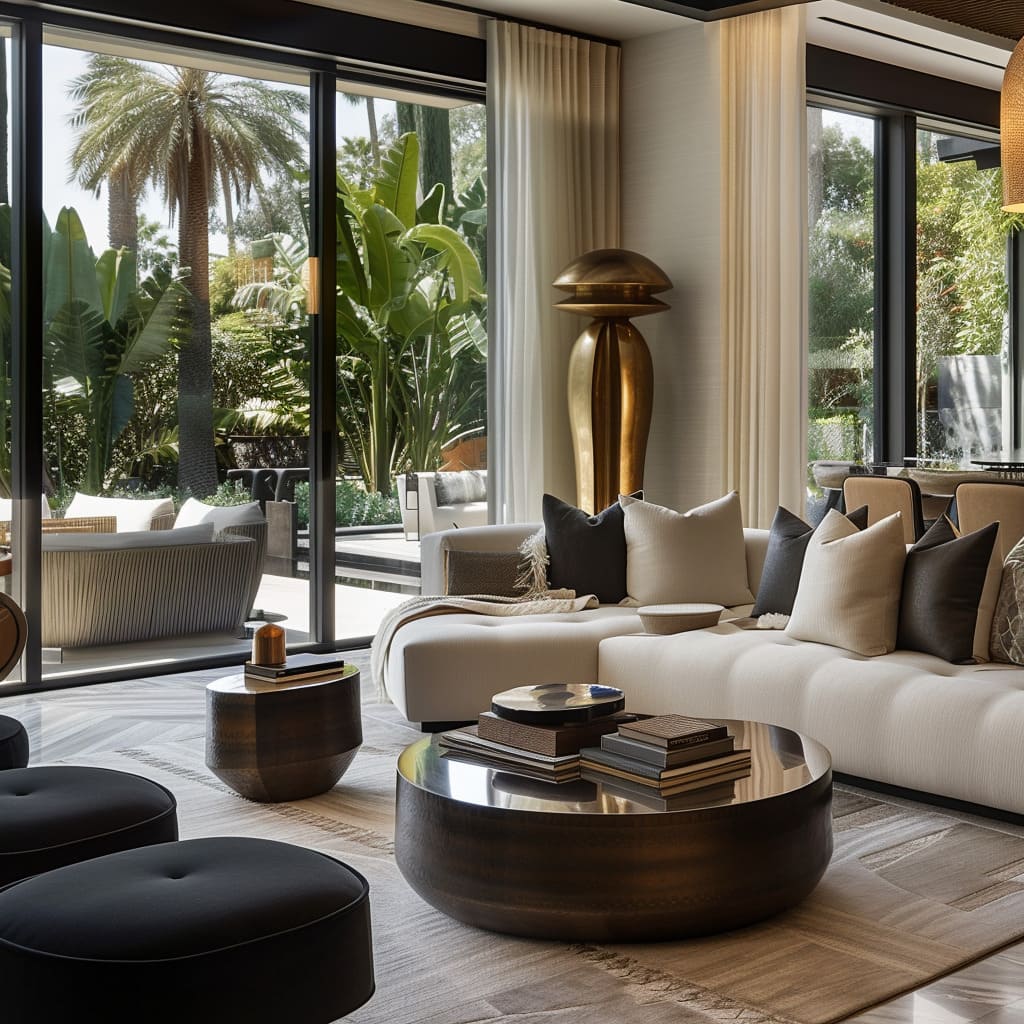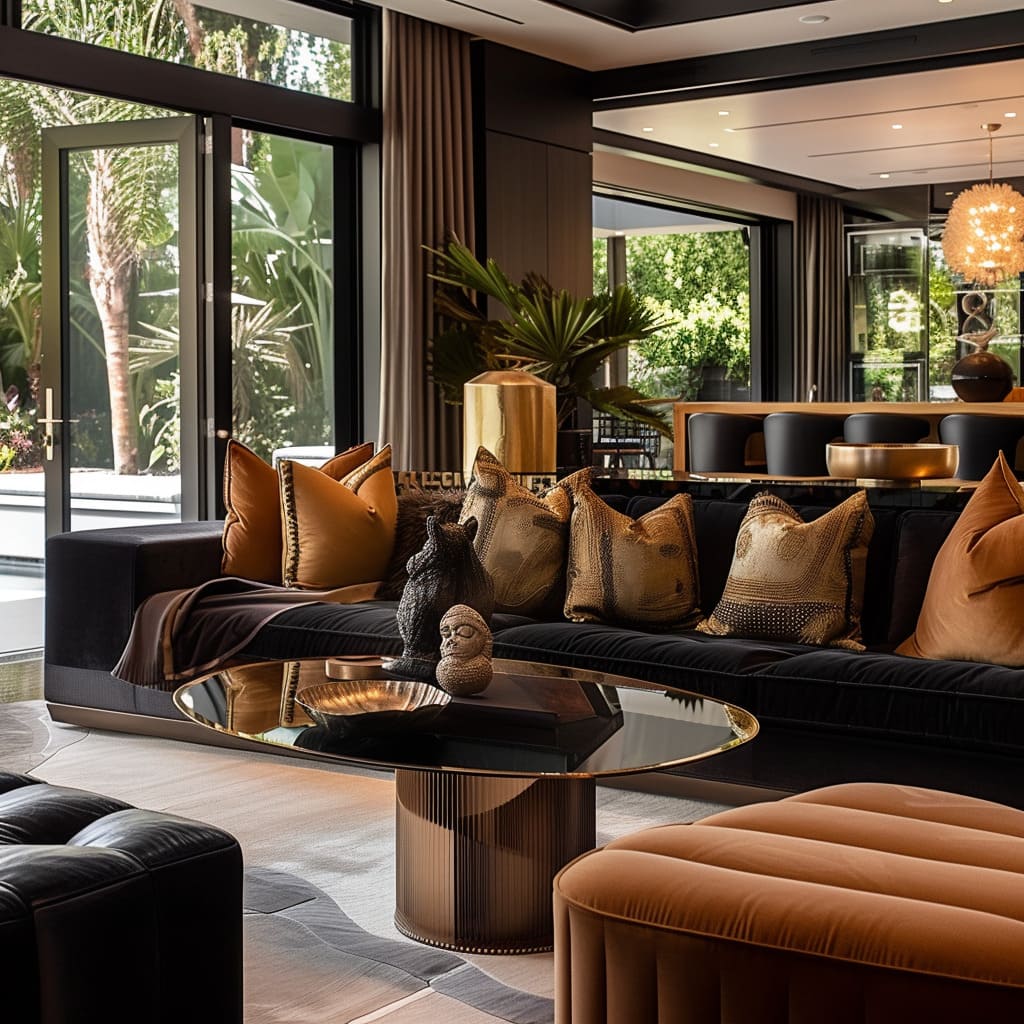In the world of interior design, furniture is more than a mere necessity—it’s a statement of style, a measure of comfort, and a manifestation of personal taste. As we explore the interiors of contemporary living spaces, the role of sophisticated furniture becomes undeniably significant.
These pieces are not chosen at random; they are carefully curated artifacts that stand at the intersection of form and function, reflecting the nuance of modern living and the personalities that inhabit these spaces. This article delves into the nuances of sophisticated furniture and its multifaceted role in enhancing the living room, transcending the traditional to create spaces that are not only visually arresting but also embodiments of comfort and personal expression.
Furniture Definers of Space
The strategic placement and scale of the furniture in these interiors are instrumental in demarcating various zones within the expansive open-plan layouts. The thoughtful arrangement creates invisible boundaries that organize the space into distinct areas for conversation, relaxation, or entertainment.
A large, centrally placed sofa might define the main socializing zone, while a pair of armchairs by the fireplace invites intimate chats. A solitary chaise by the window sets the stage for a quiet reading corner.
To effectively define spaces within your own home, consider the function each area is to serve and select furniture that supports this purpose. Use rugs to delineate spaces visually, and arrange seating to foster interaction where it’s desired, and provide solitude where it’s not.
Remember, the way you place your furniture can either open up the space or create cozy nooks within a larger room.
Texture and Color Curators
The careful selection of upholstery plays a pivotal role in these living spaces, with textures and colors meticulously chosen to contribute to a rich sensory experience. The textures range from the nubby and tactile to the buttery and smooth, providing a visual and tactile feast that invites touch and adds a layer of sophistication.
Color choices in upholstery are not arbitrary; they echo the hues of wall treatments, artwork, and natural elements, drawing the outside in and creating a harmonious color story that is both balanced and dynamic.
For your interior, consider the mood you want to create with texture and color. Choose upholstery that complements your lifestyle; for instance, lush fabrics can add luxury, while more durable materials might suit a busy family room.
Color can be used to either create a cohesive look or introduce exciting contrasts and focal points.
Reflectors of Personality
The curated selection of furniture within these interiors acts as a canvas for the homeowners’ individuality. Each piece, whether it’s a sleek modernist couch or an ornate vintage chair, is a testament to the personal style and life philosophy of the inhabitants.
The furniture can be bold and avant-garde, with shapes and materials that push the boundaries of traditional design, or it can lean towards classic elegance with timeless forms and luxurious fabrics.
Comfort Providers
Incorporating your personality into your space means selecting pieces that speak to you on a personal level. Don’t be swayed by trends; instead, opt for furniture that you connect with, whether it’s because of its style, color, or the story behind it.
Your home should be a reflection of who you are, so let your furniture tell your unique story.
Despite their modern designs, these pieces prioritize comfort. Oversized sofas and plush chairs invite relaxation and leisure, serving the fundamental purpose of a living room.
The tactile experience is key here; materials are chosen not just for their visual appeal but for their comfort to the touch.
Cushions are ample and welcoming, inviting you to sink in, while the ergonomics of the seating ensure that comfort is maintained even during prolonged periods of use. In your own living room, seek out furniture that marries form with function.
Opt for seating that supports the body comfortably with high-quality fabrics that are both soft and durable. Don’t be afraid to test out furniture before buying, ensuring it meets your comfort criteria.
Artistic Statements
Some of the furniture selections are sculptural, contributing to the rooms’ overall composition as pieces of functional art. They engage viewers, prompting a second glance and closer inspection, much like a sculpture in a gallery.
These pieces often play with form, texture, and material to create visual interest and become a statement within the space.
They can be conversation starters, reflecting the unique taste and sophistication of the homeowner. To incorporate such artistic statements into your home, consider furniture that has a unique design element—perhaps a chair with an unusual silhouette or a table with an intricately designed base.
The key is to find pieces that stand out for their artistic merit while still serving their intended purpose within the home.
Connectors of Components
In these interiors, furniture is not an isolated element but a connective tissue that brings cohesion to the room. The choice of furniture, with its form and finish, resonates with other design components, creating a unified aesthetic.
For instance, a metal-framed coffee table can echo the metallic details of the room’s hardware, tying the look together. Similarly, the curvature of an armchair can provide a counterpoint to the straight lines of shelving units or doorways, offering a visual respite and a sense of balance.
To implement this connecting role in your own space, observe the dominant lines and materials in your room and seek out furniture that shares these elements. A lamp with a brass base can complement brass door handles, or a walnut table can tie in with walnut flooring, creating a sense of continuity and flow.
Balancers of Proportions
The living spaces depicted are often expansive, with high ceilings and large wall spaces. Here, furniture plays a crucial role in scaling the room to human proportions, ensuring the space feels inviting rather than overwhelming.
Large, plush sofas, substantial coffee tables, and broad armchairs serve to ‘bring the ceiling down’ and make the area feel more intimate and grounded.
Complements to Architecture
Each piece of furniture is chosen to harmonize with the architectural features of the space. This is evident in the way a sleek, low-profile sofa can parallel the linear fireplace, or how a smooth, rounded table contrasts with the rectangular shapes of windows and doorways.
The furniture acts as an extension of the architecture, chosen to emphasize the beauty of the design rather than to overshadow it.
In your own home, take cues from the existing architecture. Select furniture that echoes the lines and shapes found in your space.
A chair with a curved back can mimic an arched window, while a rectangular ottoman can complement the straight edges of a modern fireplace. The goal is to create a sense of harmony where the furniture and the built environment enhance one another.
Curators of Luxury
The furniture within these interiors is not just functional; it’s a curated collection of luxury. The materials—rich velvets, polished woods, supple leathers—are selected for their high-end appeal and sensory pleasure.
Craftsmanship is apparent in the meticulous stitching, the seamless joinery, and the delicate inlays, showcasing a level of detail that speaks to a bespoke quality. The furniture stands not only as a testament to aesthetic preference but also as an embodiment of luxury living, providing both comfort and a statement of elegance.
When aiming to replicate this curation of luxury in your own space, focus on quality over quantity. Choose pieces that boast superior craftsmanship and materials.
Look for furniture that feels as good as it looks, with attention to detail that speaks to a handcrafted allure. Allow each piece to stand out on its own merit, creating a sense of sophistication and luxury.
Modulators of Light
The sophisticated furniture in these living rooms plays with light in a way that transforms the atmosphere of the space. Light-colored sofas and chairs with reflective surfaces can make a room feel airy and spacious, bouncing light around to brighten dark corners.
Conversely, darker furniture pieces can anchor a space and imbue it with a sense of warmth and intimacy, absorbing light and creating a cozy environment. This interplay with light is crucial to the ambiance of the room, affecting not just the visual impact but also the mood.
Hosts for Accessories
Furniture in these spaces does more than fill a room—it serves as a platform for personal expression through accessories. A coffee table’s surface becomes a display for treasured items, each one telling a story or adding a layer of texture and color.
Side tables host lamps that cast a warm glow, and bookshelves are not just for storage but are styled with an eye for design, with books, sculptures, and keepsakes arranged to draw the eye and invite conversation.
To make your furniture a host for accessories, select items that reflect your interests and aesthetics. Use trays to corral smaller items on larger surfaces, and don’t be afraid to mix textures and materials.
Remember, the accessories should complement the furniture, not overwhelm it, allowing each piece to shine.
Navigational Guides
The sophisticated furniture in these spaces is strategically placed to create invisible pathways, leading the flow of movement and defining areas of activity without the need for walls or barriers. For example, a sectional sofa may subtly partition the living area from the dining space, while a series of armchairs directs the flow around a focal fireplace.
The pathways created by the furniture are intuitive, ensuring that movement through the room is fluid and natural.
Transitional Elements
In these interiors, furniture pieces are often a blend of classic and contemporary design elements, serving as transitional objects that unify the space. A modern sofa with traditional tufting details, or a classic wingback chair upholstered in a contemporary fabric, can bridge the gap between old and new.
This duality allows the space to honor the past while embracing the present, creating rooms that are both timely and timeless.
Enhancers of Views
Furniture in these rooms is positioned not only for the function and flow of the space but also to accentuate and frame the natural vistas beyond the windows. Seating is oriented to provide the best views, whether it’s a city skyline or a pastoral landscape.
Even the height and form of the furniture are considered to ensure an unobstructed view, complementing rather than competing with the beauty outside.
Demonstrators of Craftsmanship
The craftsmanship in these interiors is evident in the precision of the furniture’s details. Whether it’s the perfect alignment of a pattern on an upholstered chair or the seamless integration of a hidden drawer, the expertise in craftsmanship is a hallmark of the furniture.
The hand of the artisan is apparent in every stitch and joint, making each piece as much a work of art as it is a functional object.
To bring this level of craftsmanship into your home, invest in custom made furniture in Dubai from skilled artisans or reputable companies known for their attention to detail. Look for signs of handwork, like hand-stitched upholstery or custom wood inlays, which can elevate the overall sense of quality in your space.
Sophisticated furniture, as we’ve seen, does much more than fill a room. It shapes experiences, influences emotions, and tells stories.
Each piece, chosen with intention, contributes to a symphony of style that speaks to both the aesthetic and the practical aspects of living. It’s about striking that perfect chord between luxury and livability, ensuring that a living room is not just seen but felt and lived in.
As we close the chapter on this exploration of elegant interiors, it becomes clear that the thoughtful selection and placement of furniture is paramount in crafting a space that resonates with the rhythm of daily life while providing a canvas for individuality to shine. Whether through the seamless blending of textures and colors, the strategic balancing of proportions, or the meticulous celebration of craftsmanship, sophisticated furniture remains the cornerstone of a well-conceived living space—a testament to design’s power to elevate the mundane to the extraordinary.





